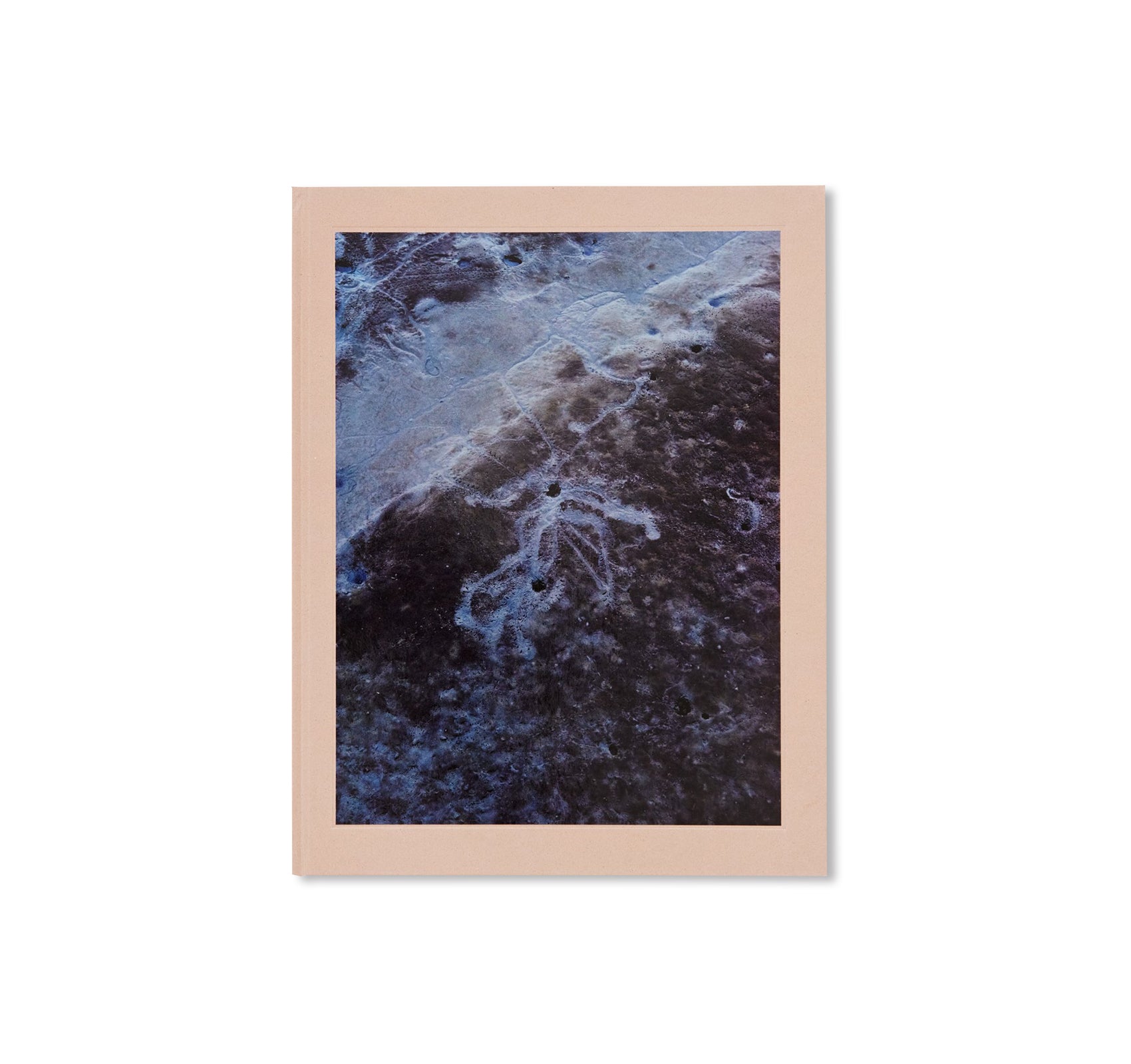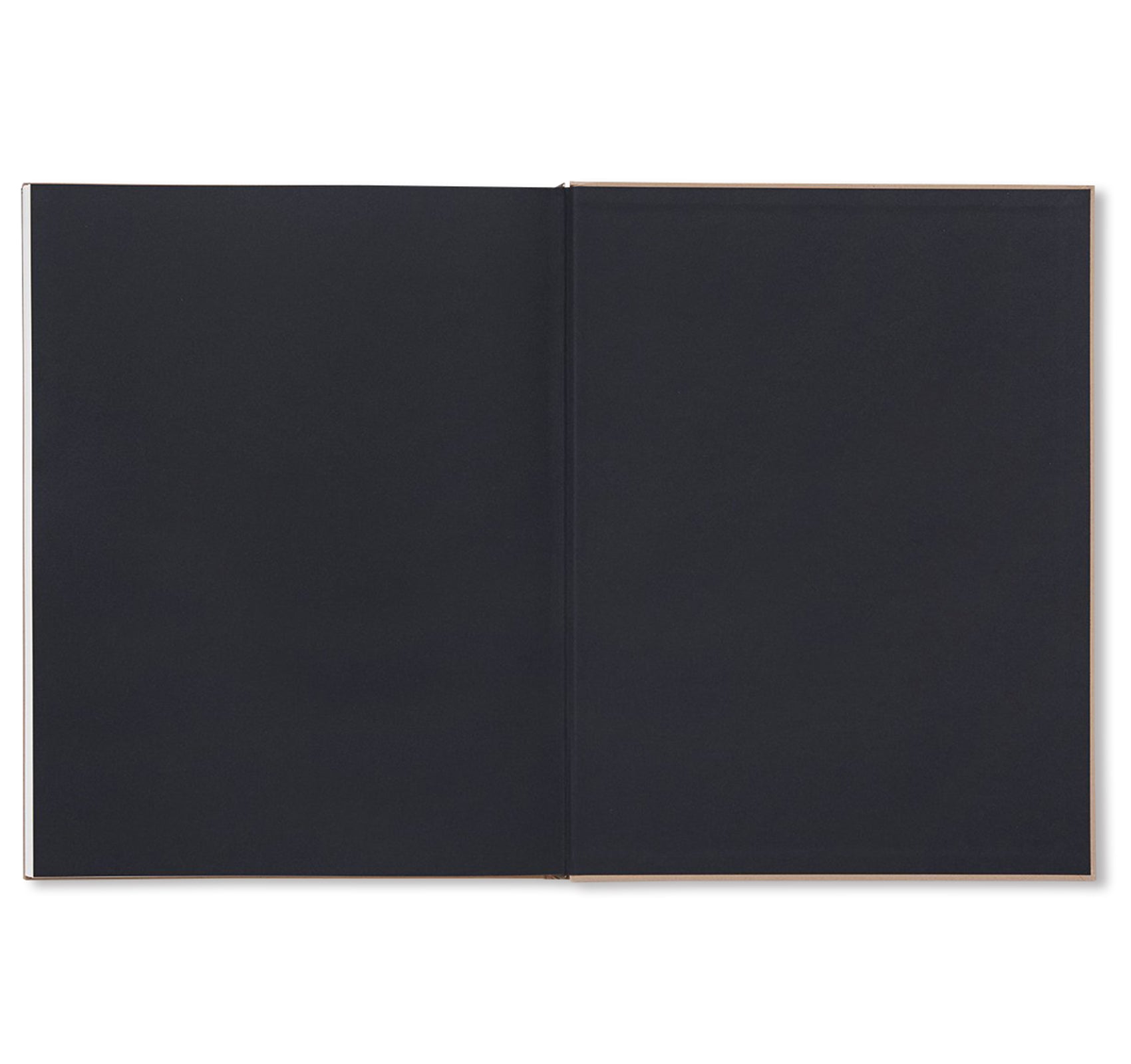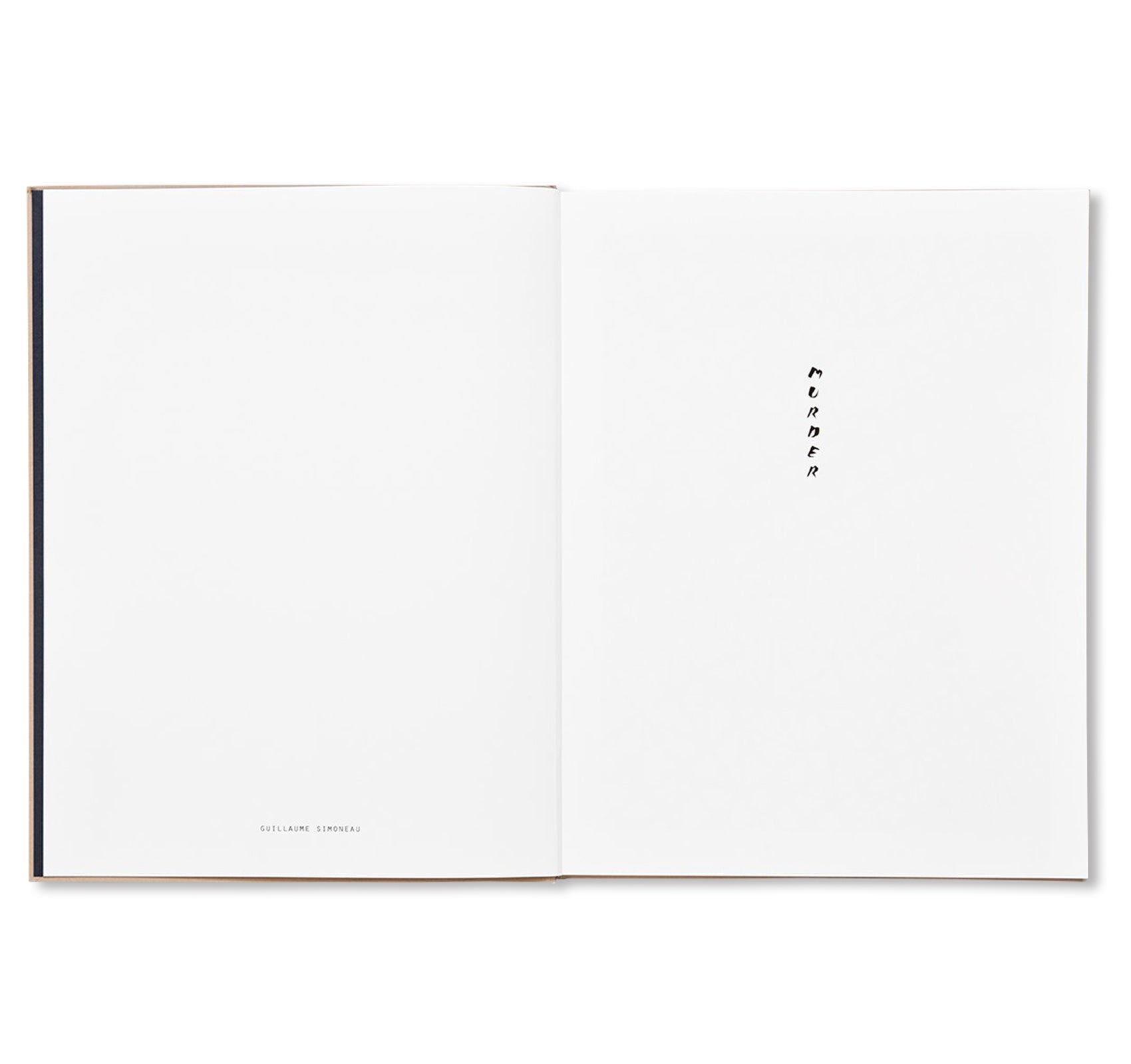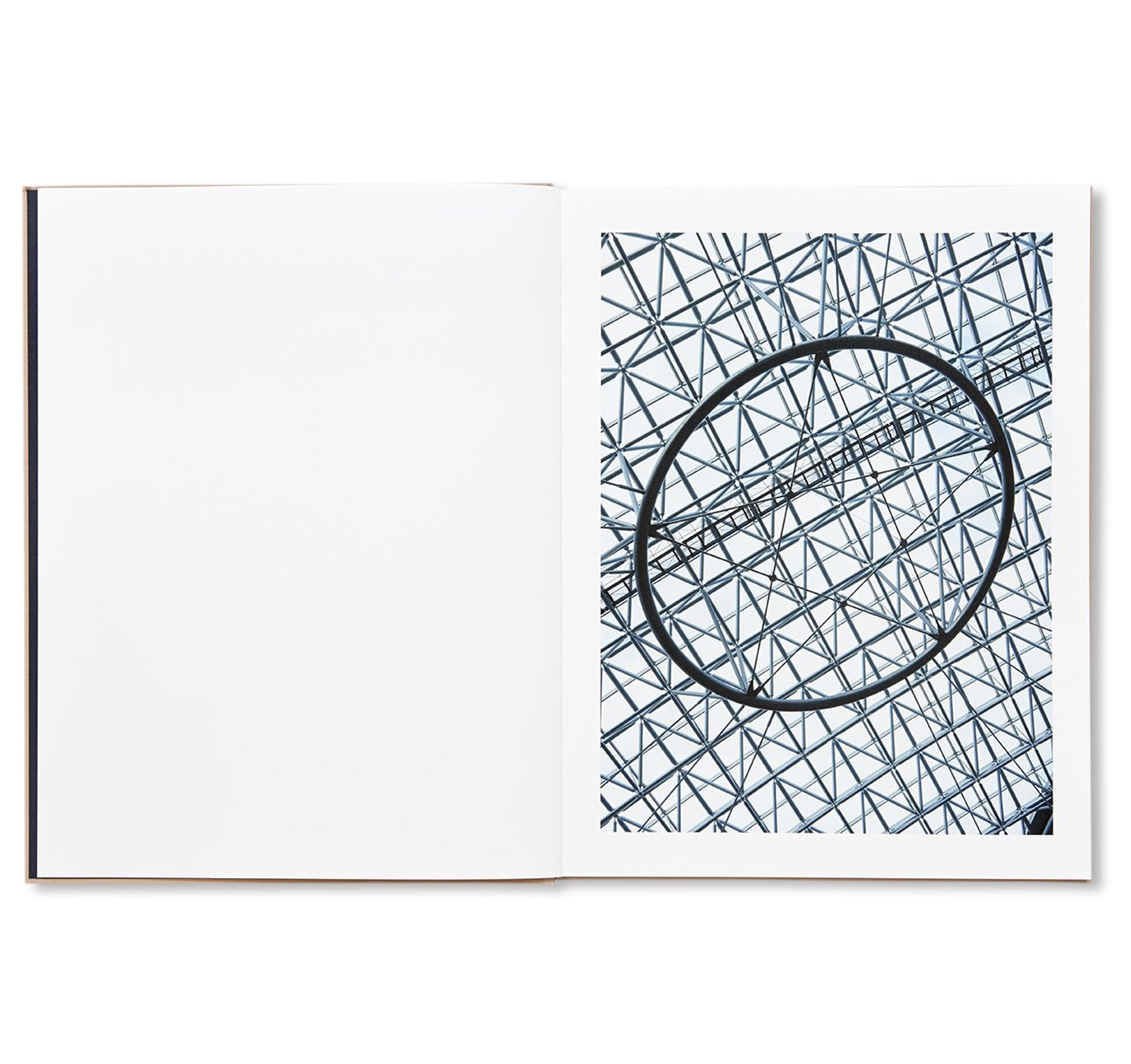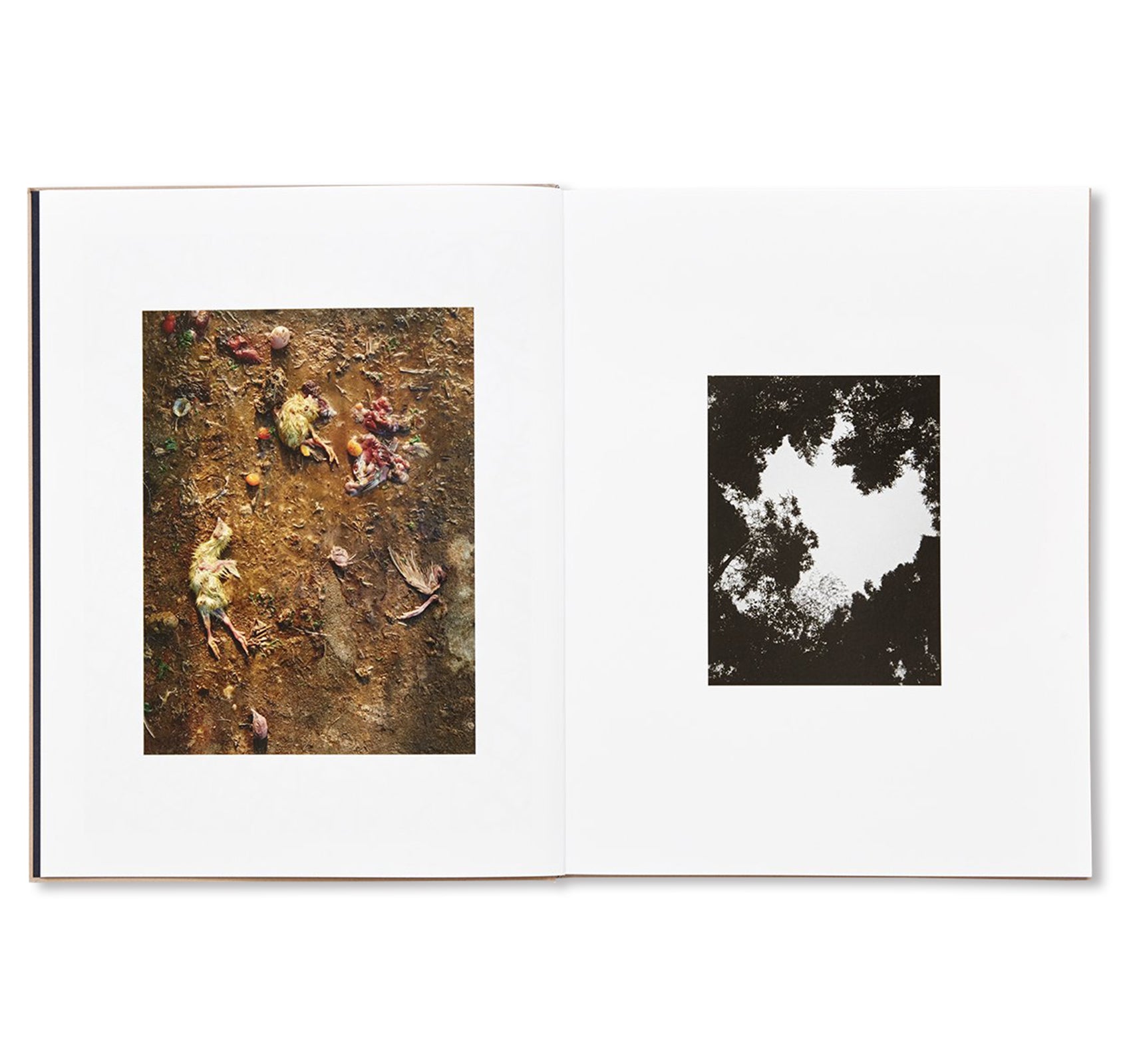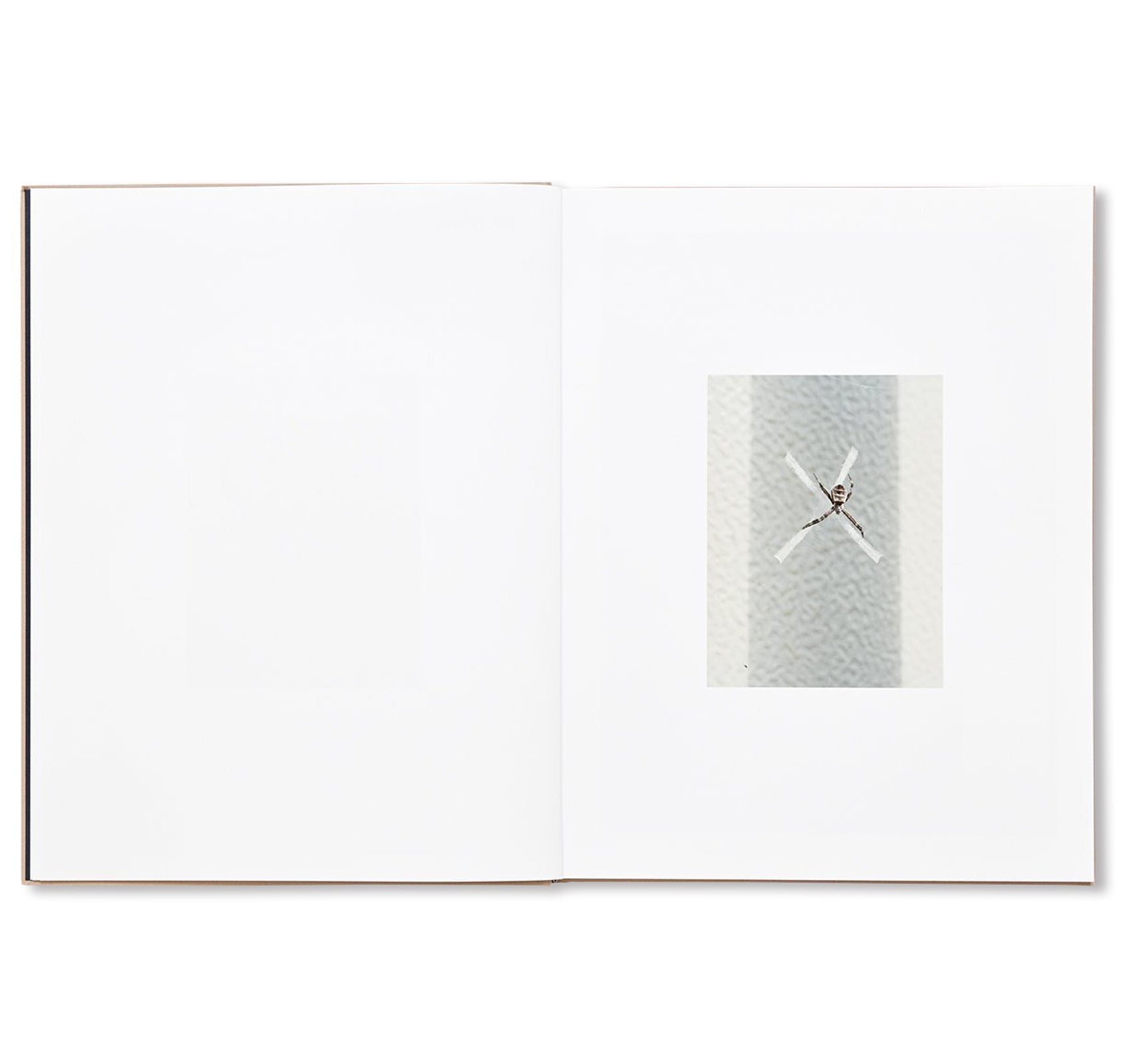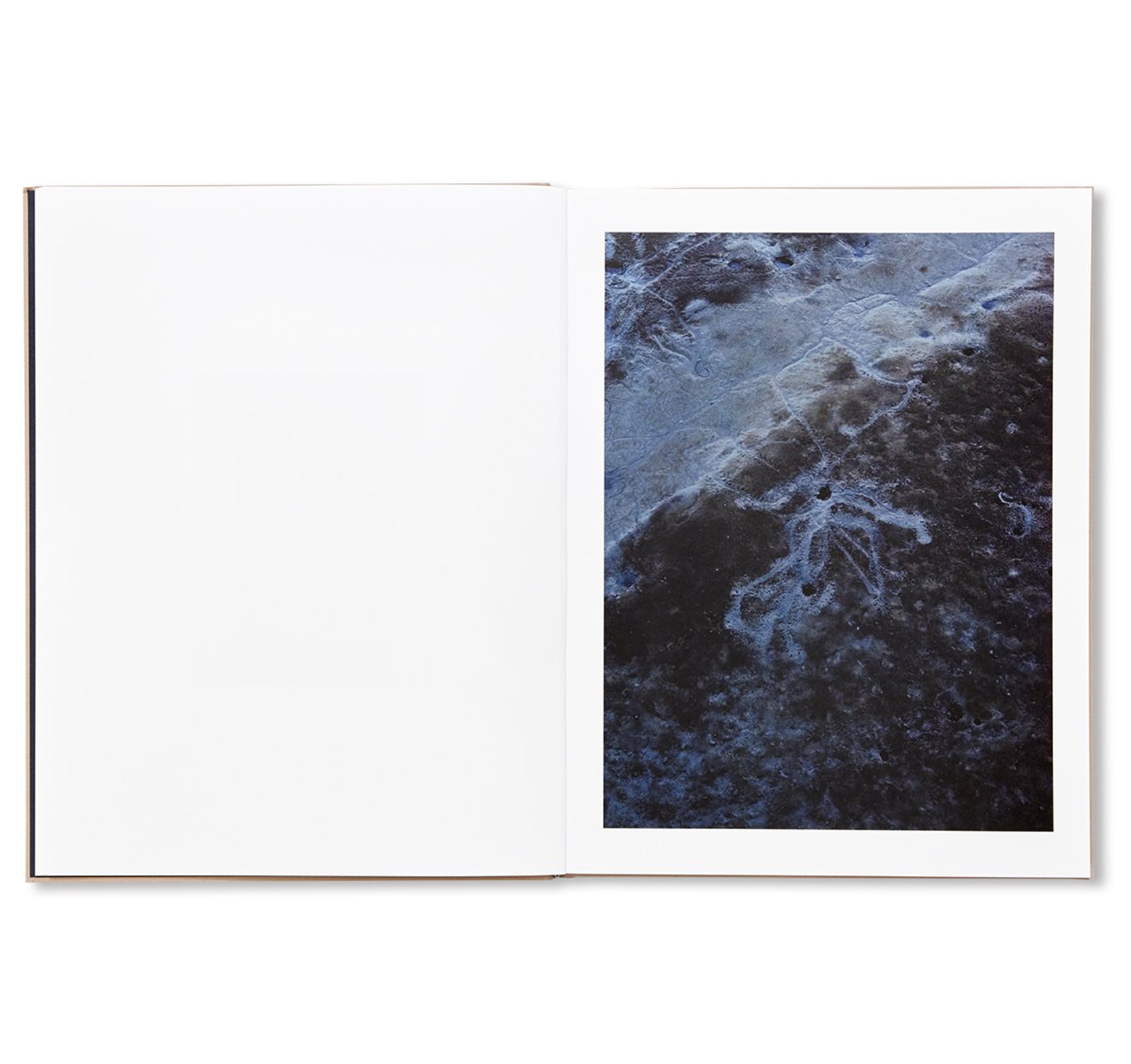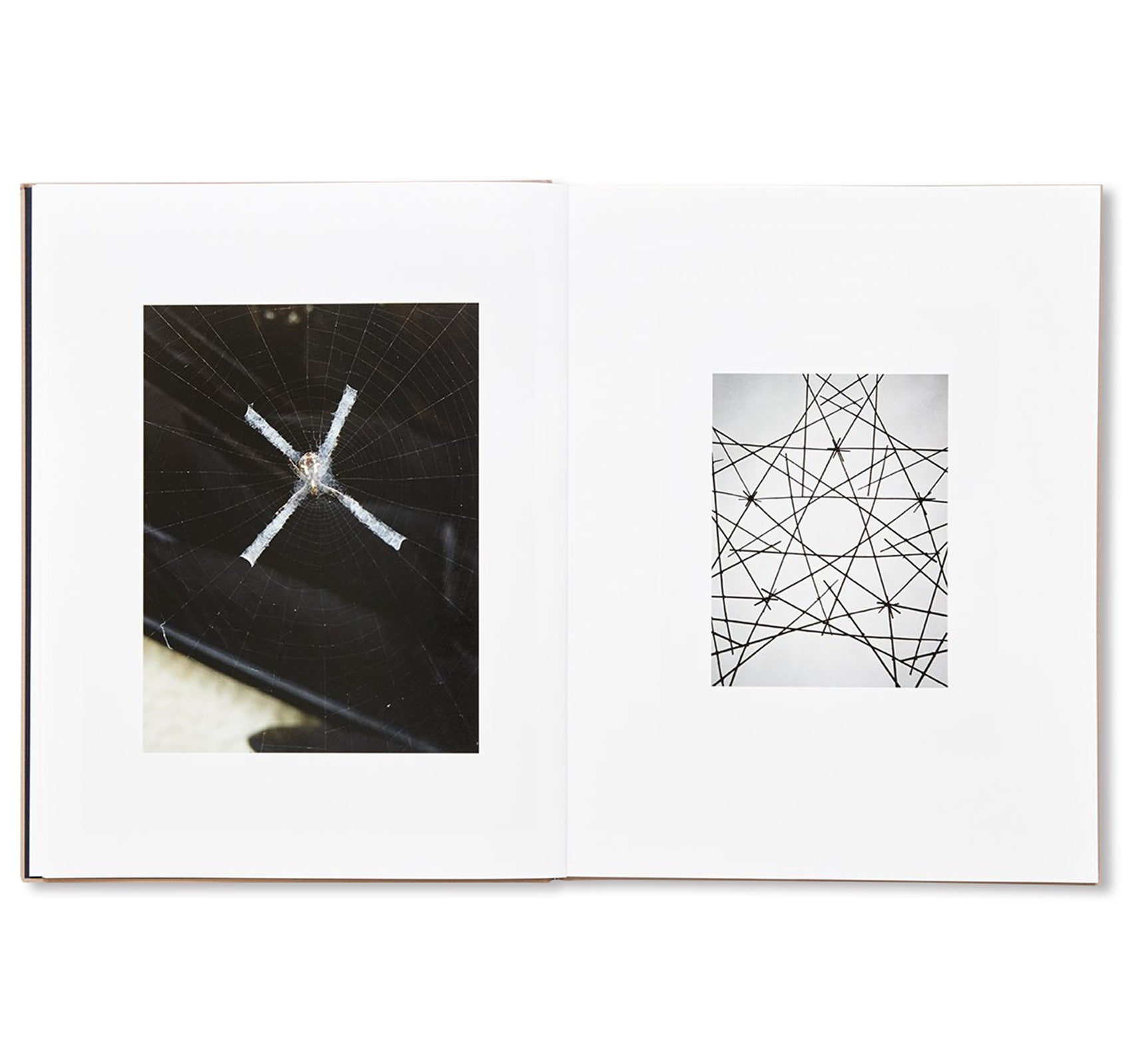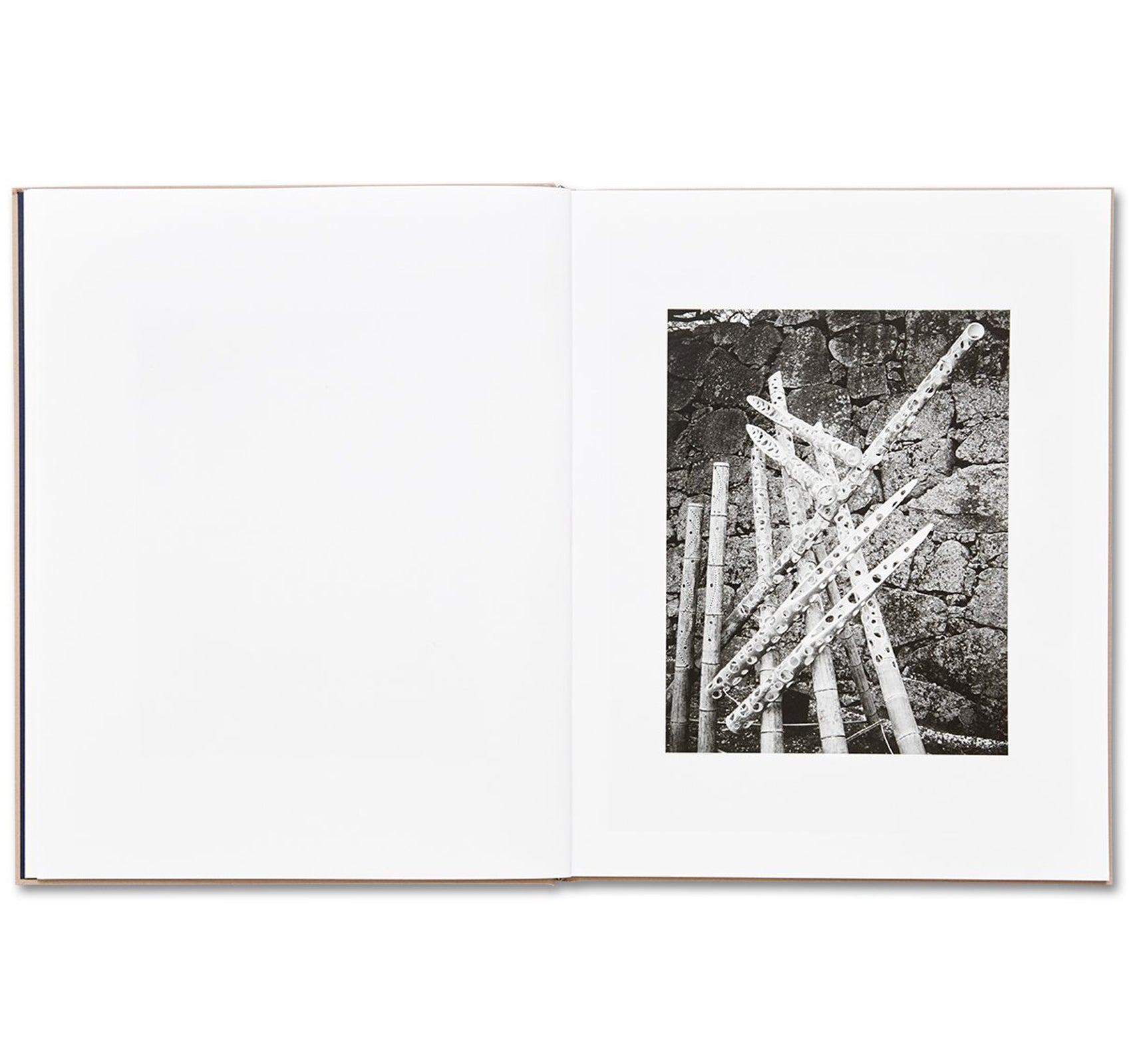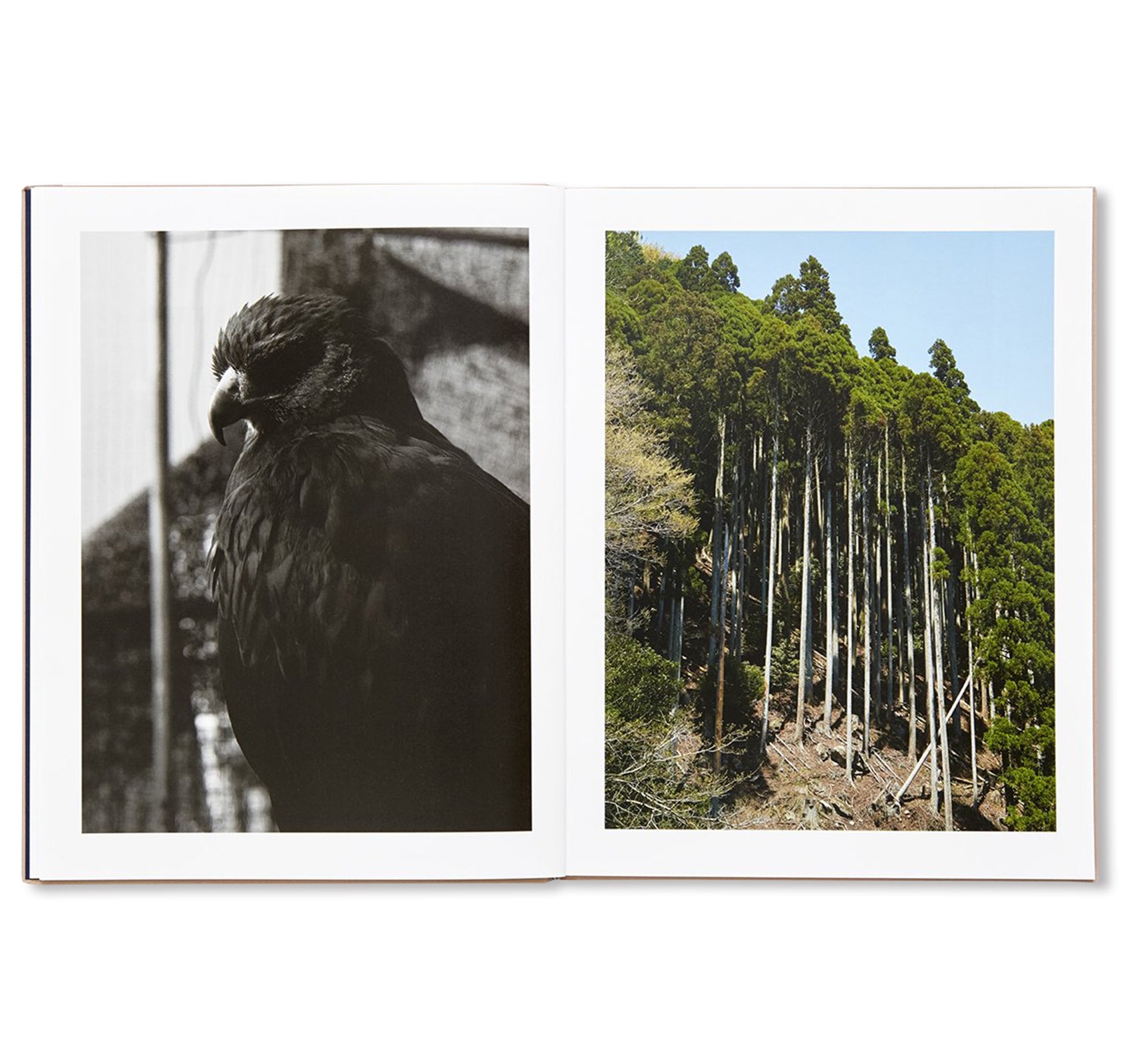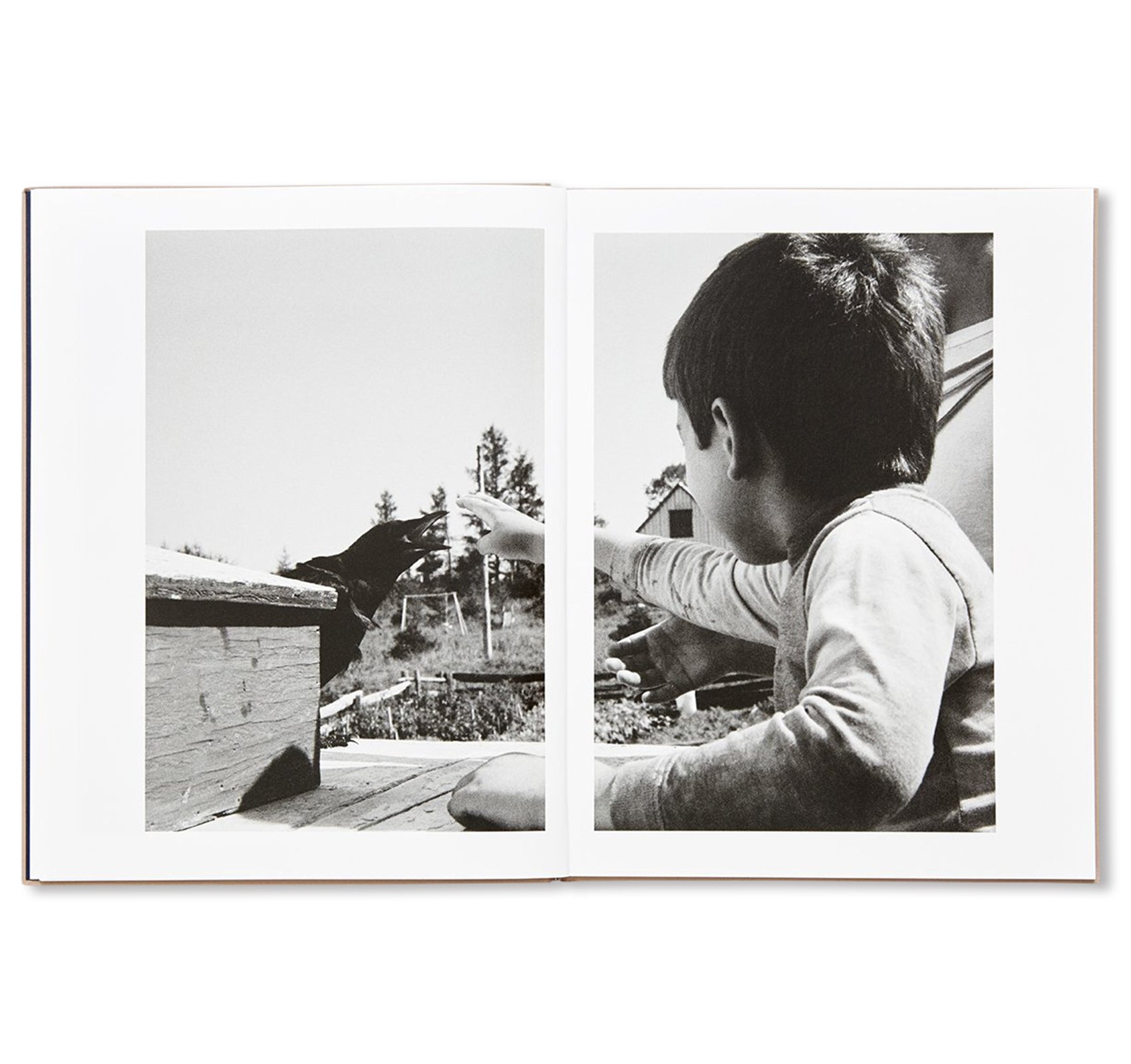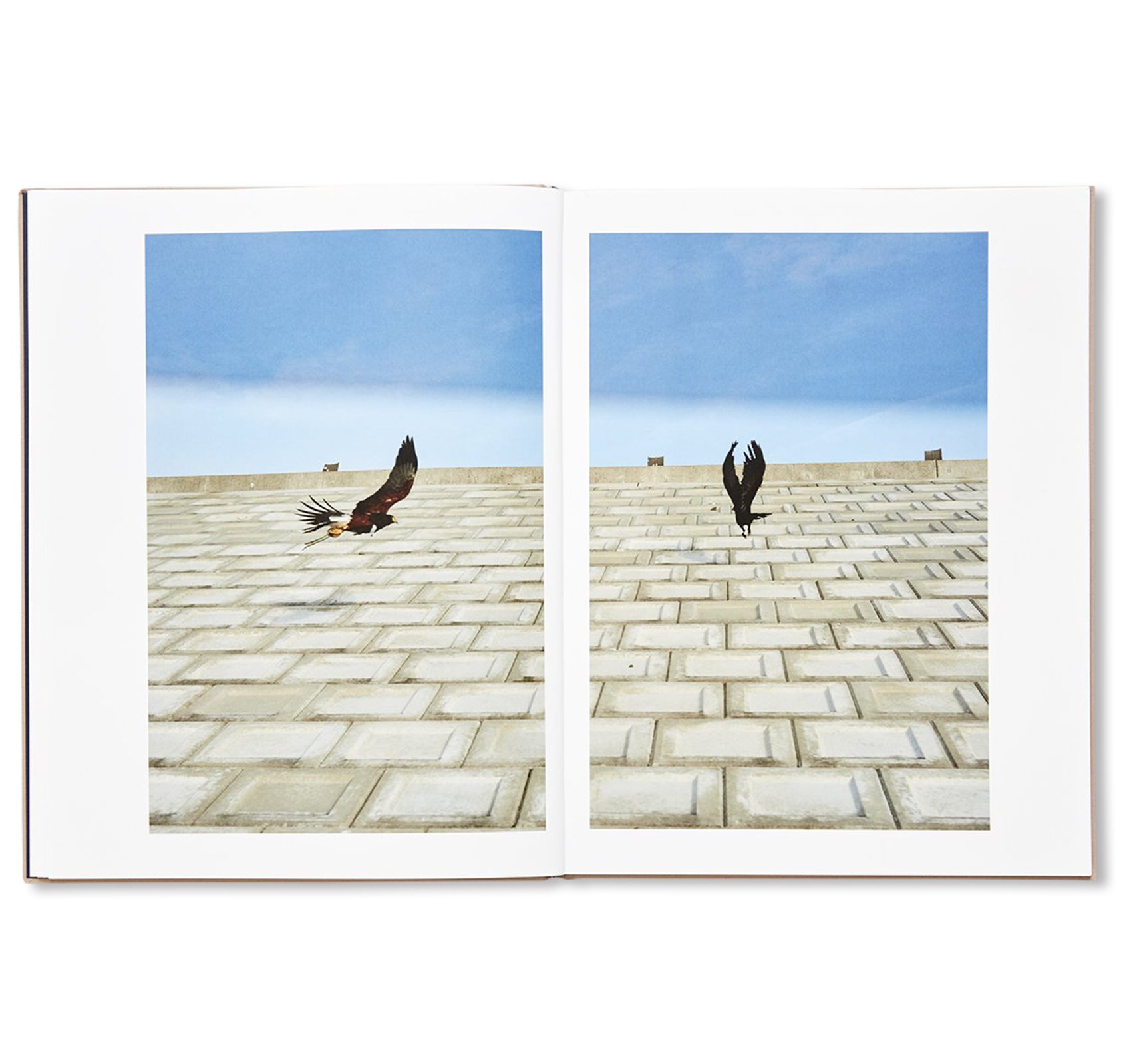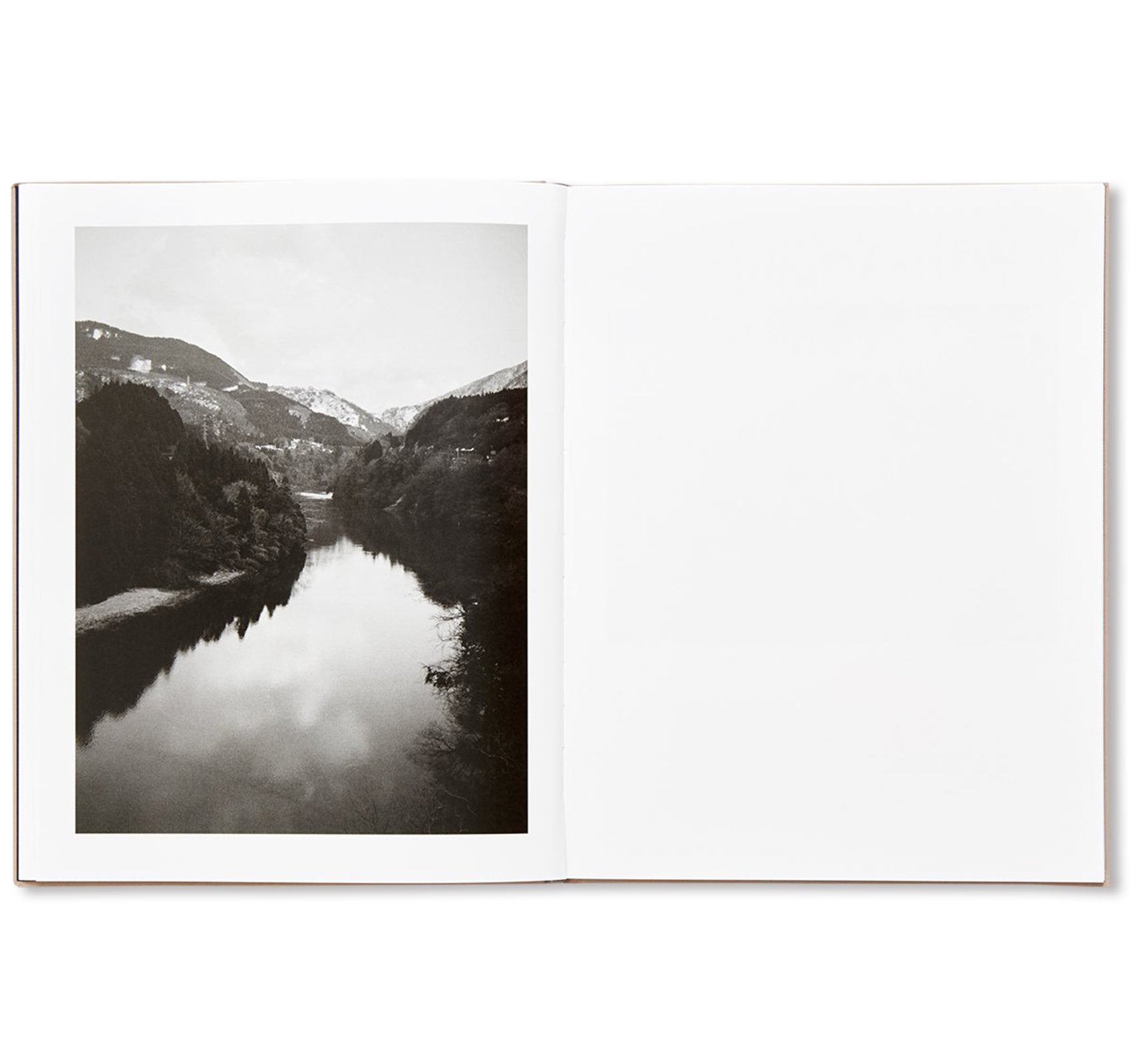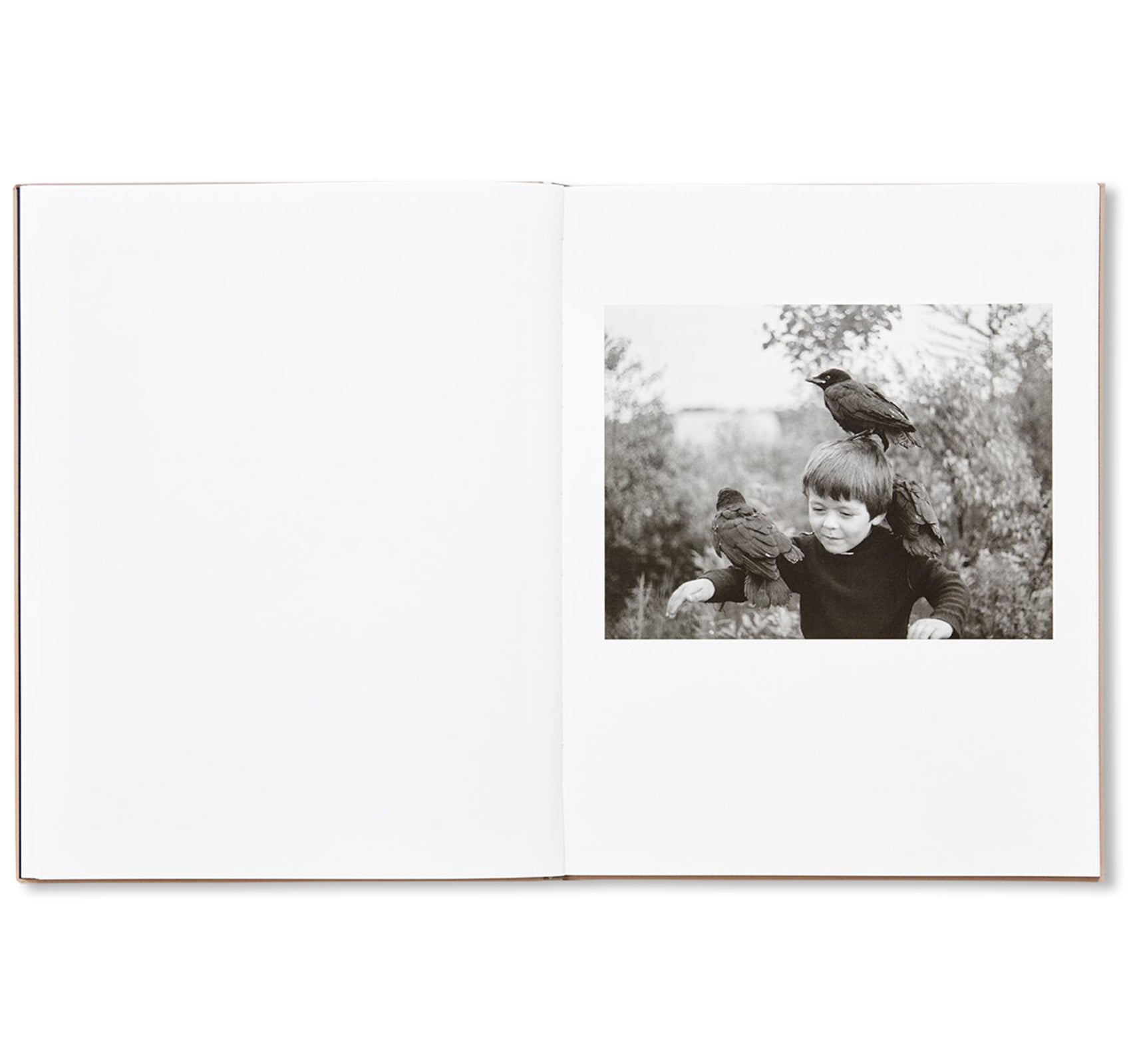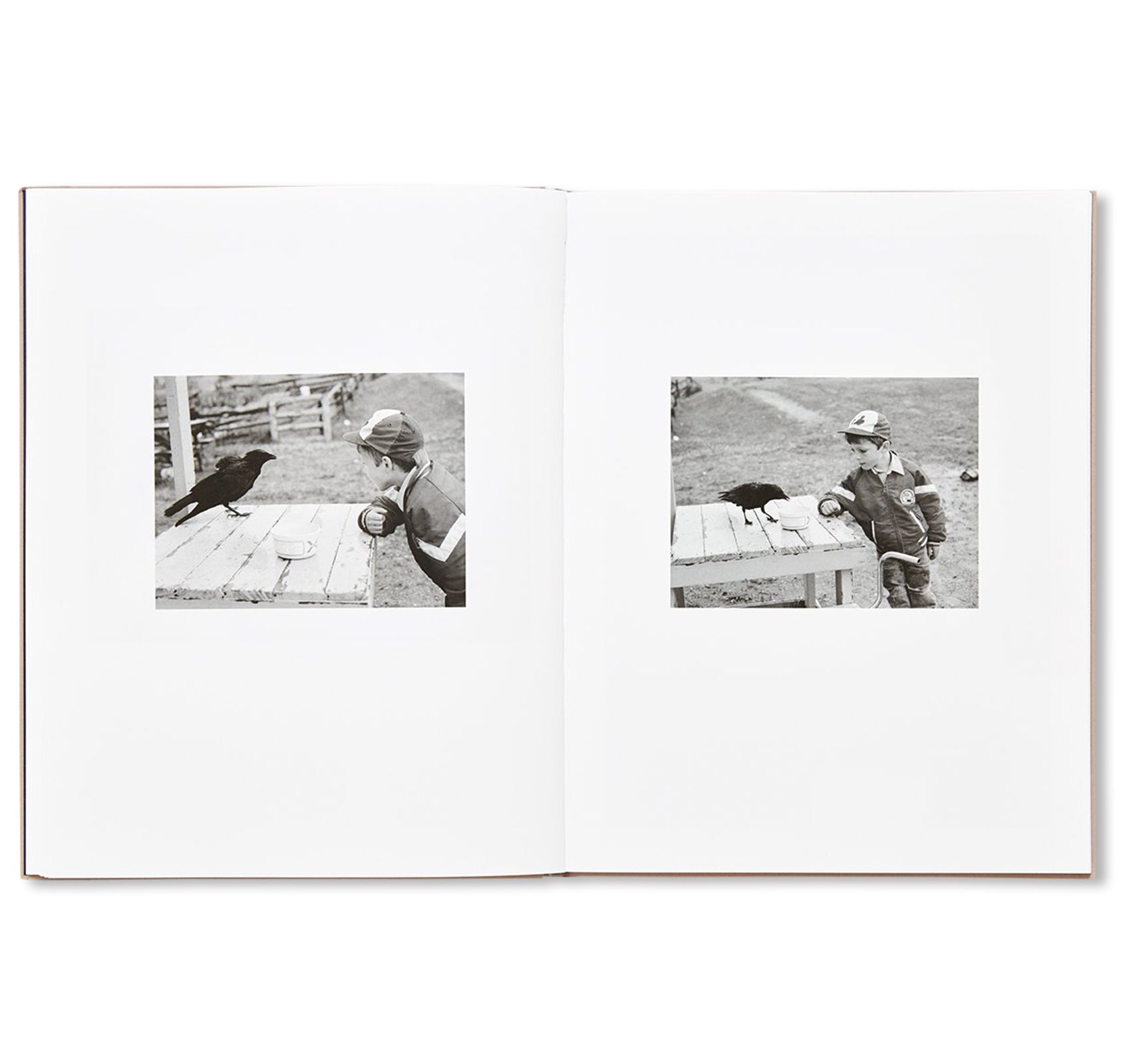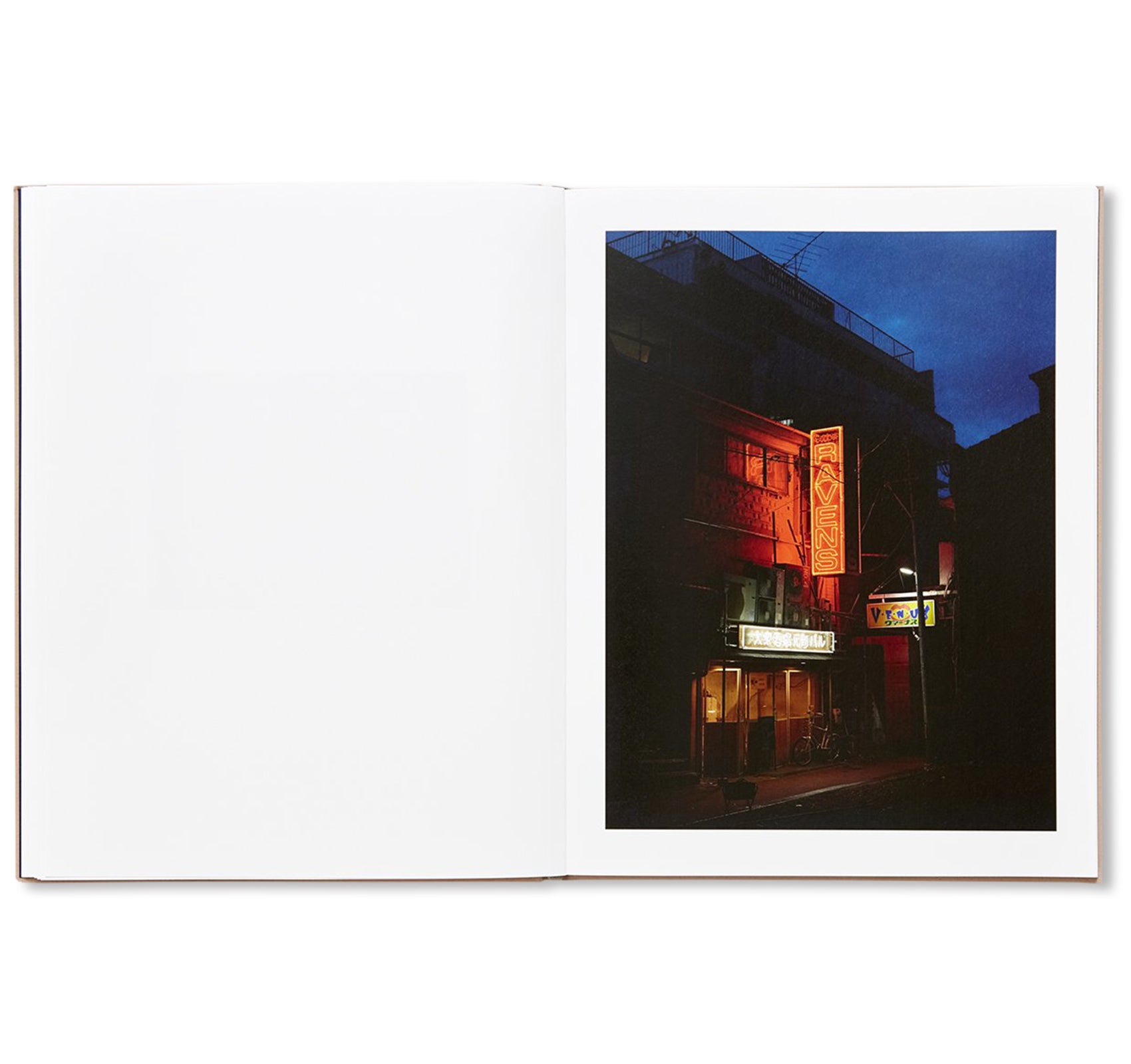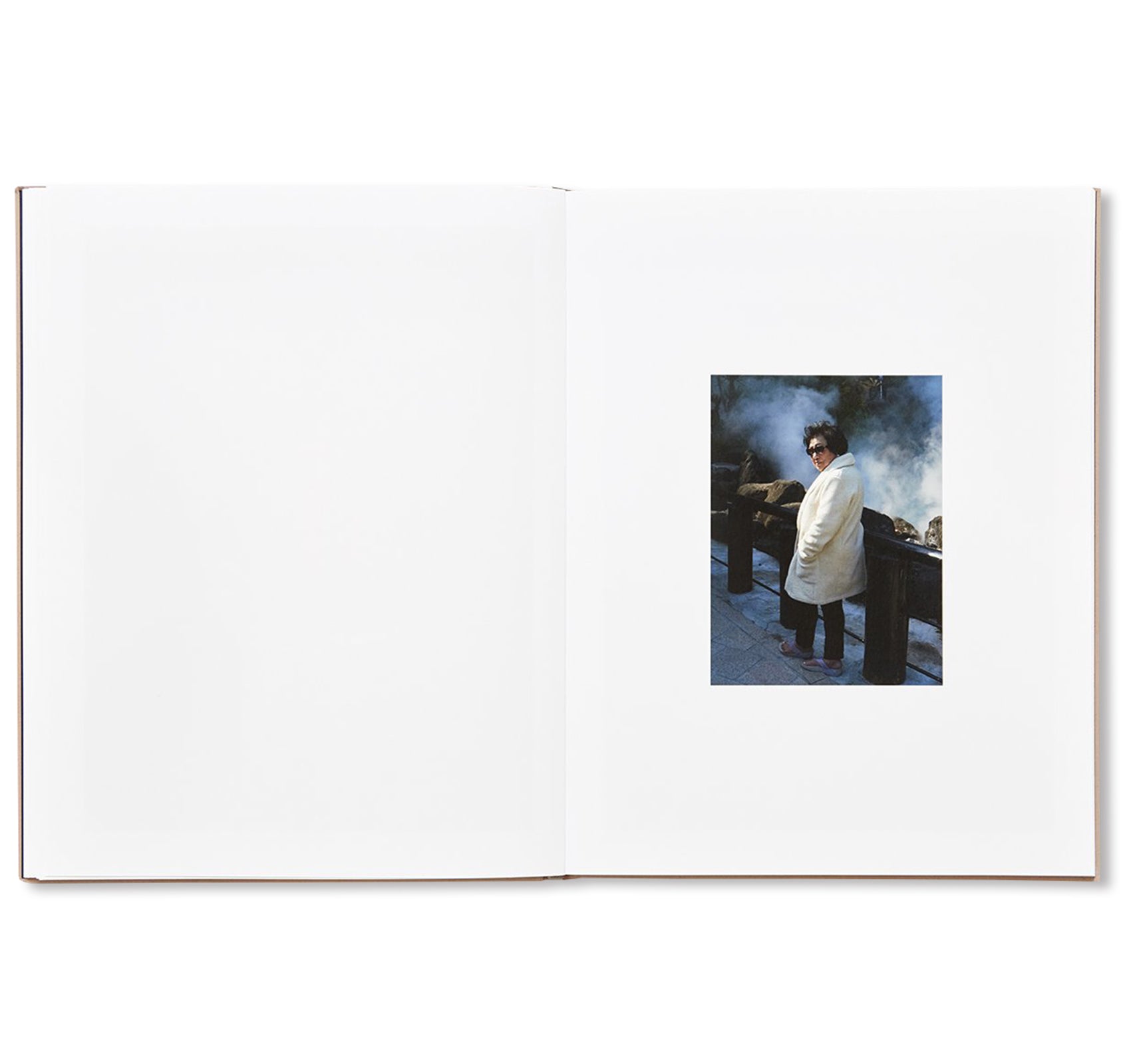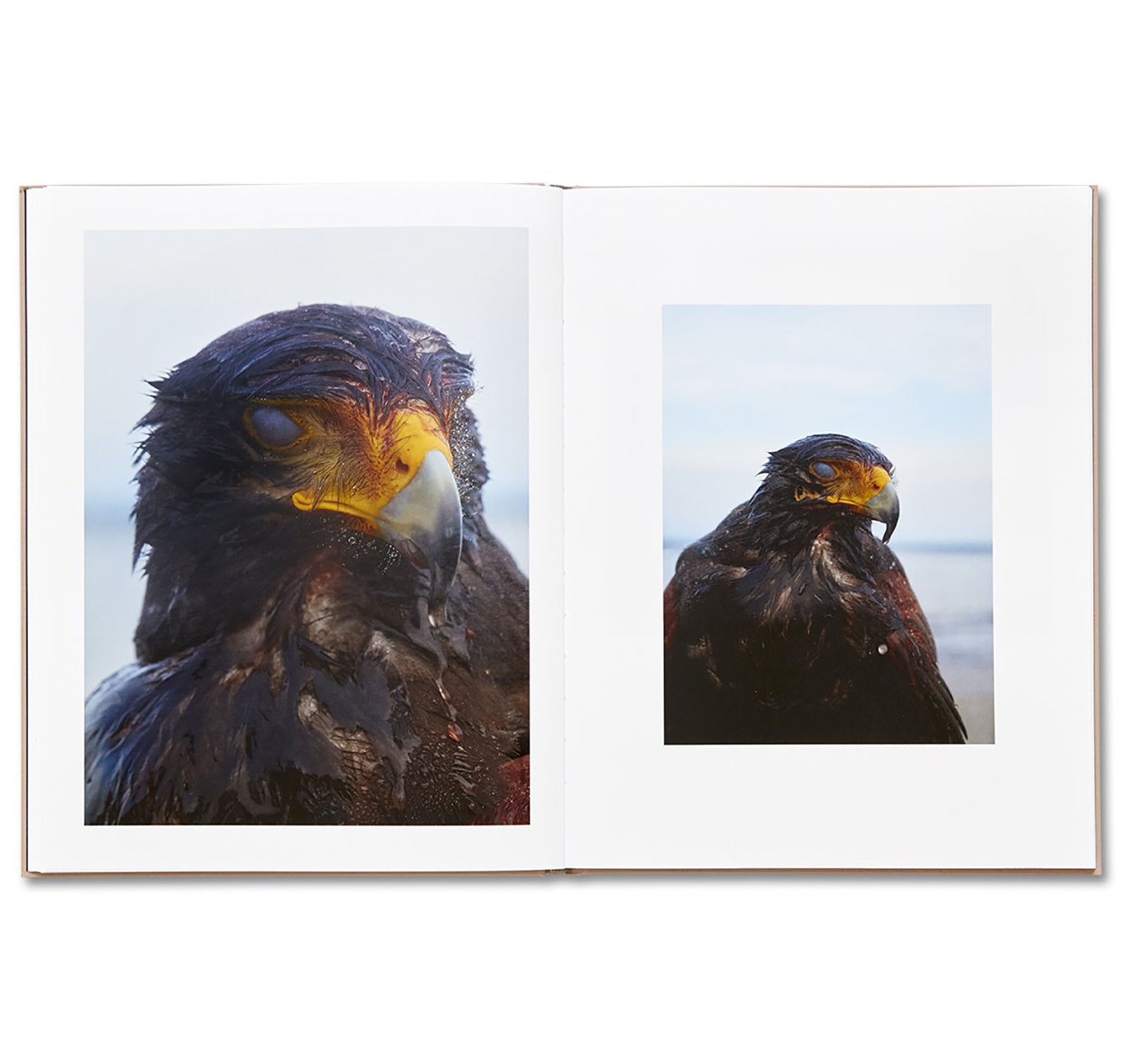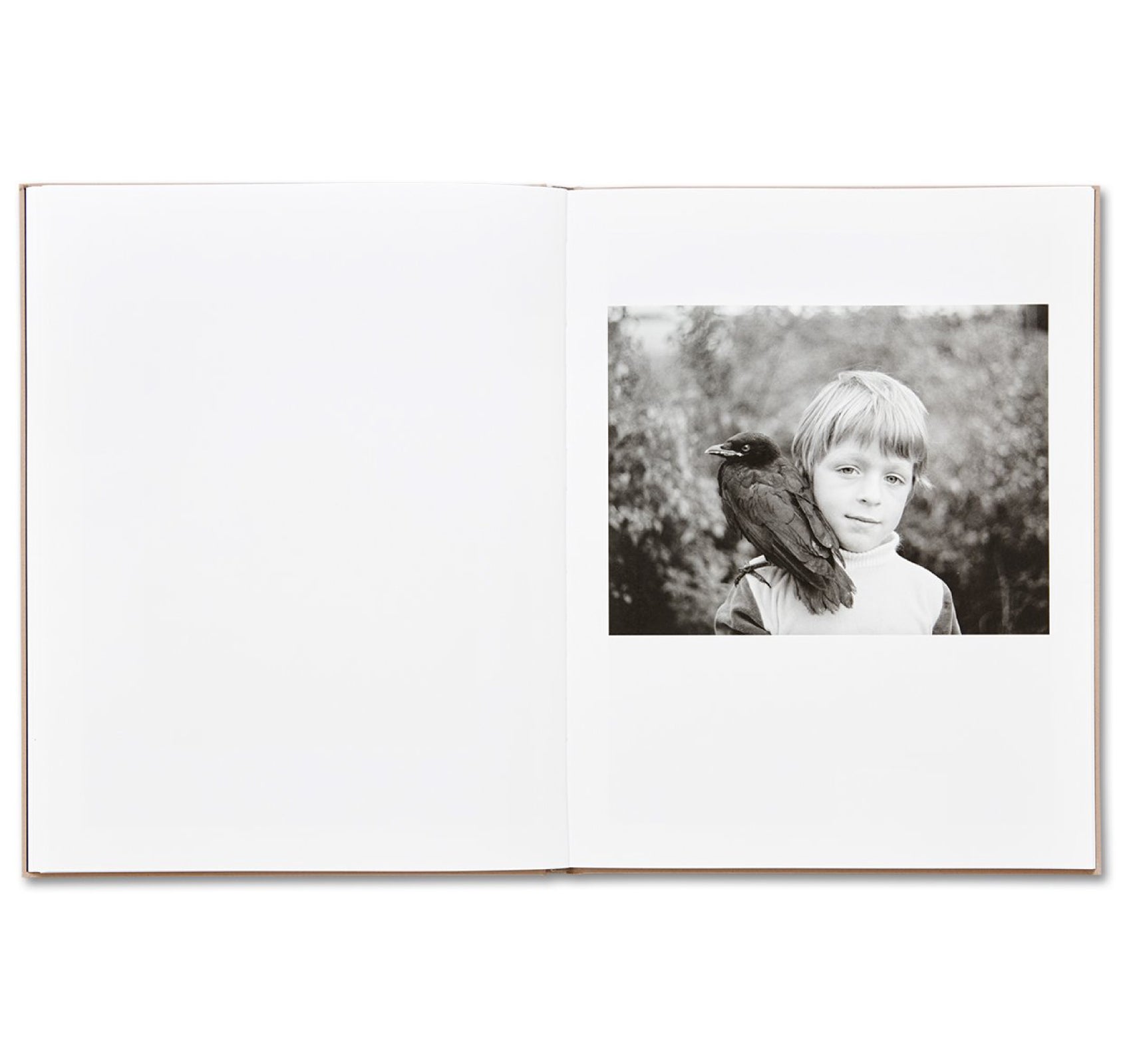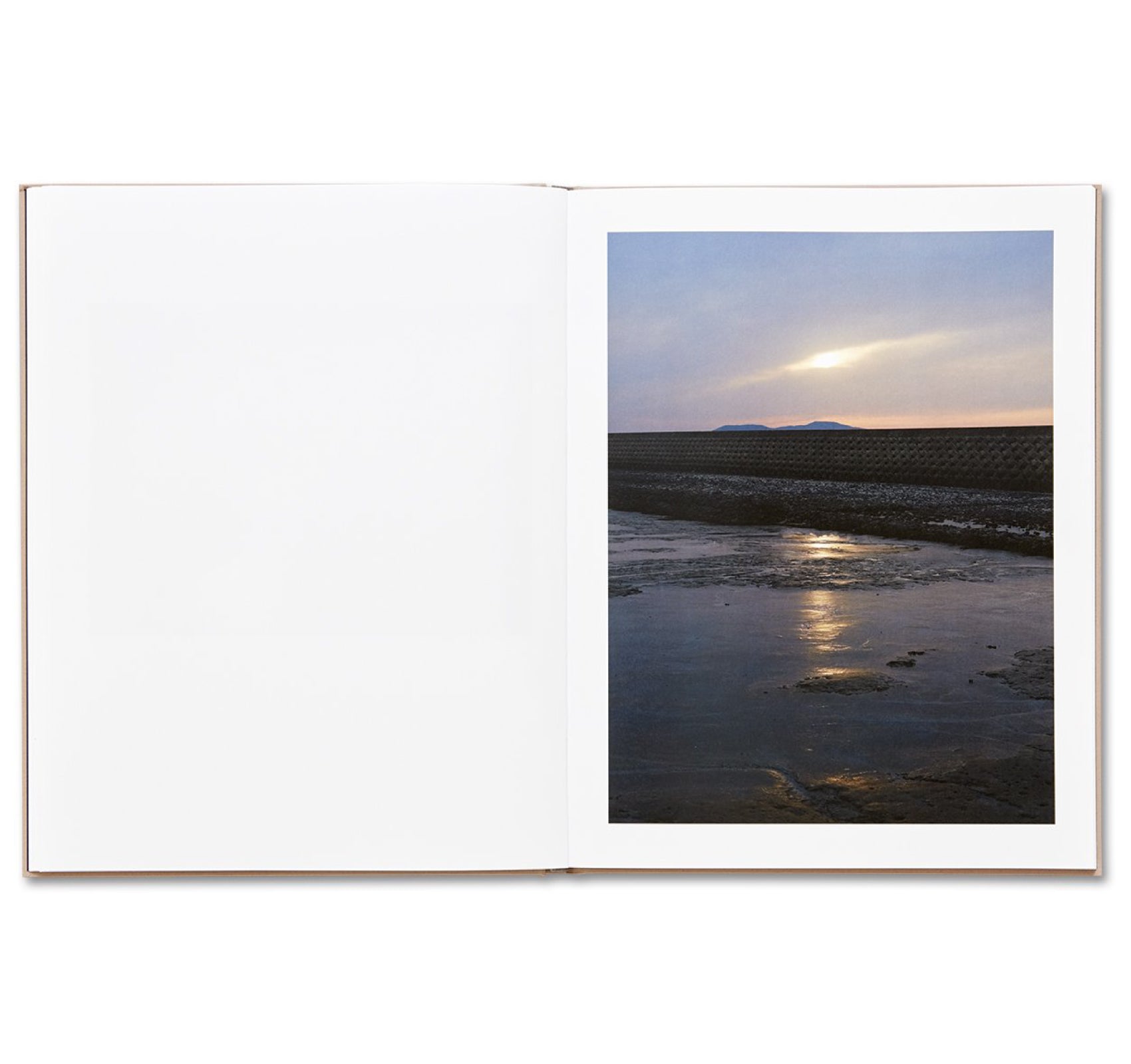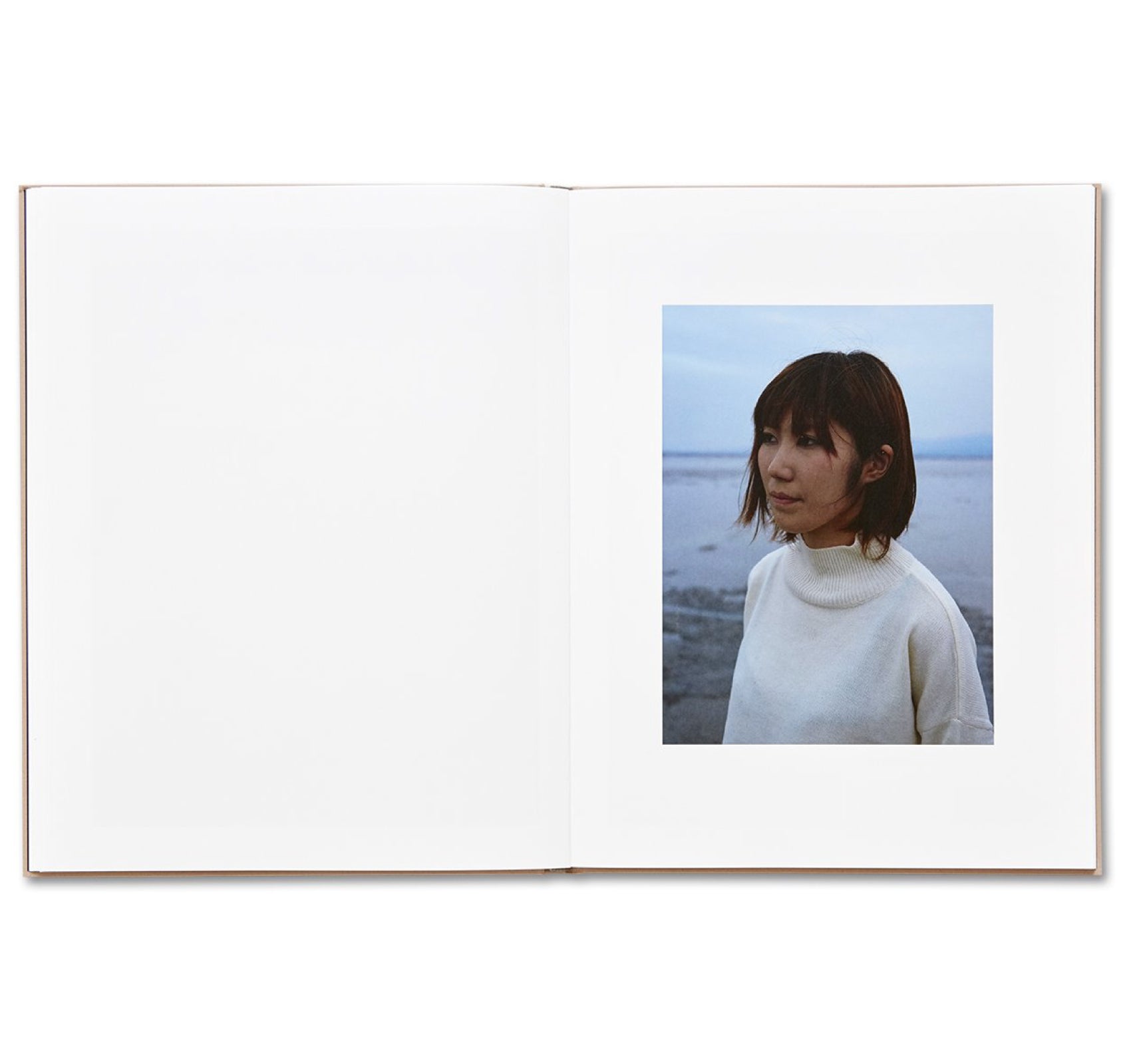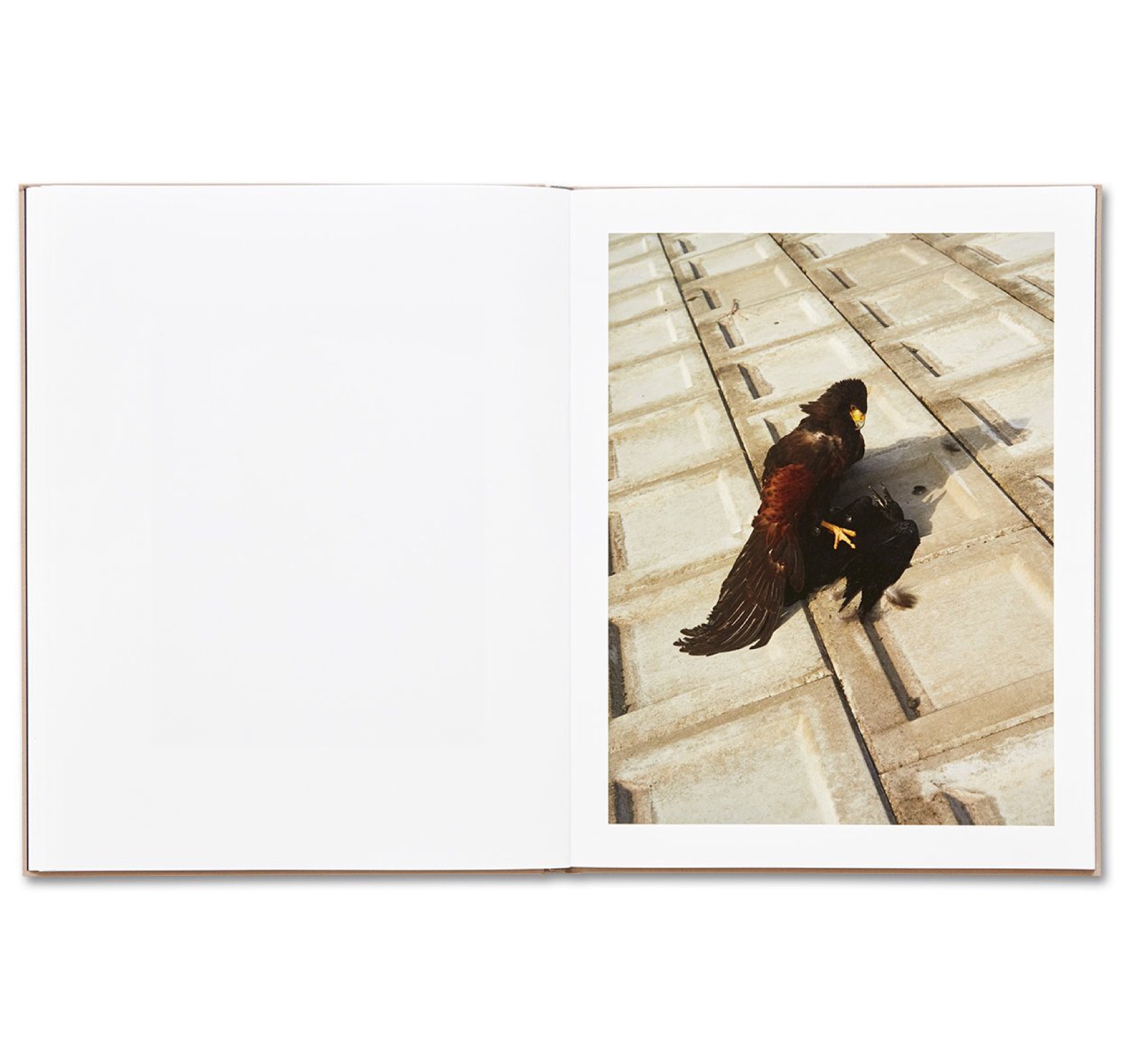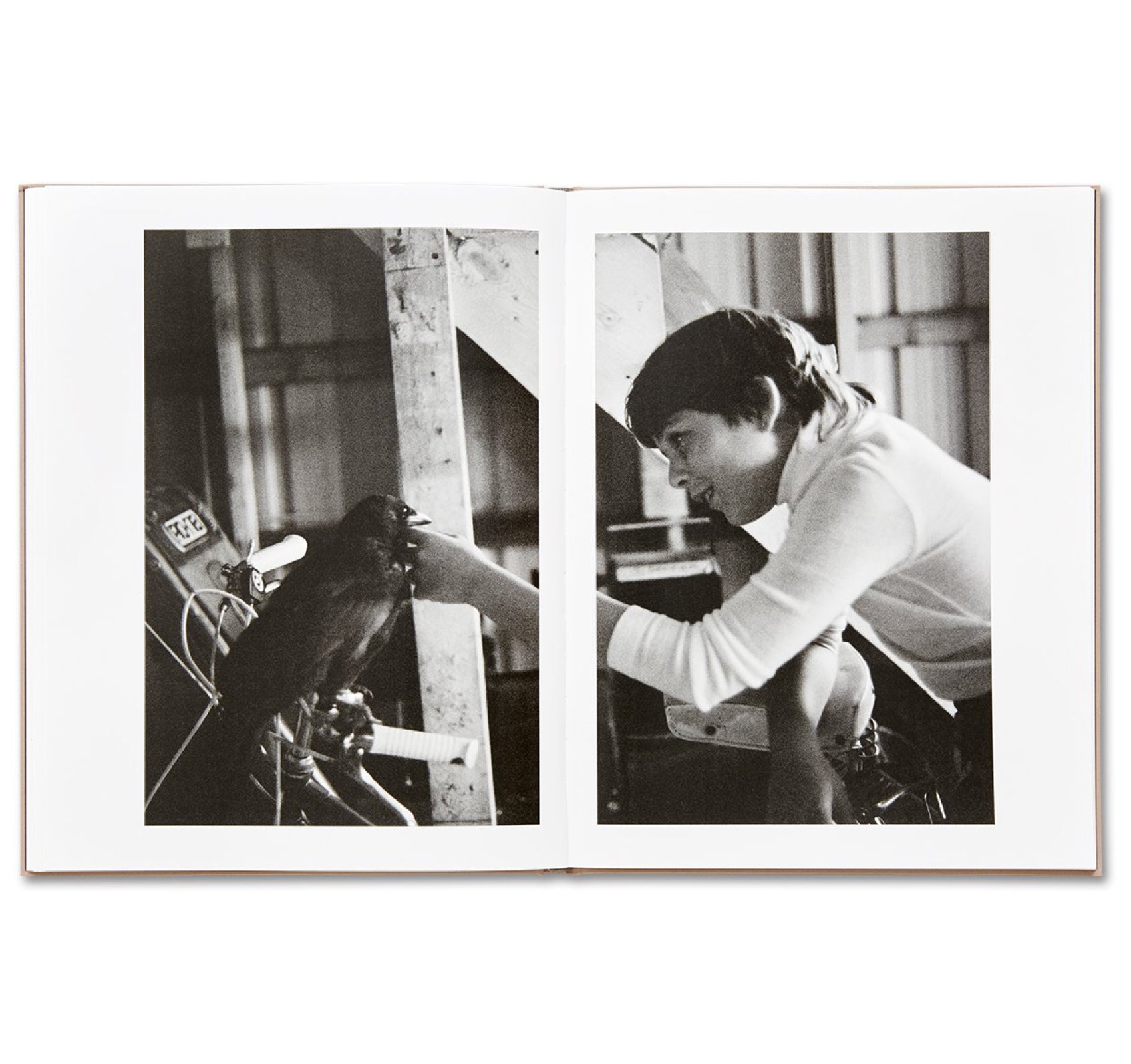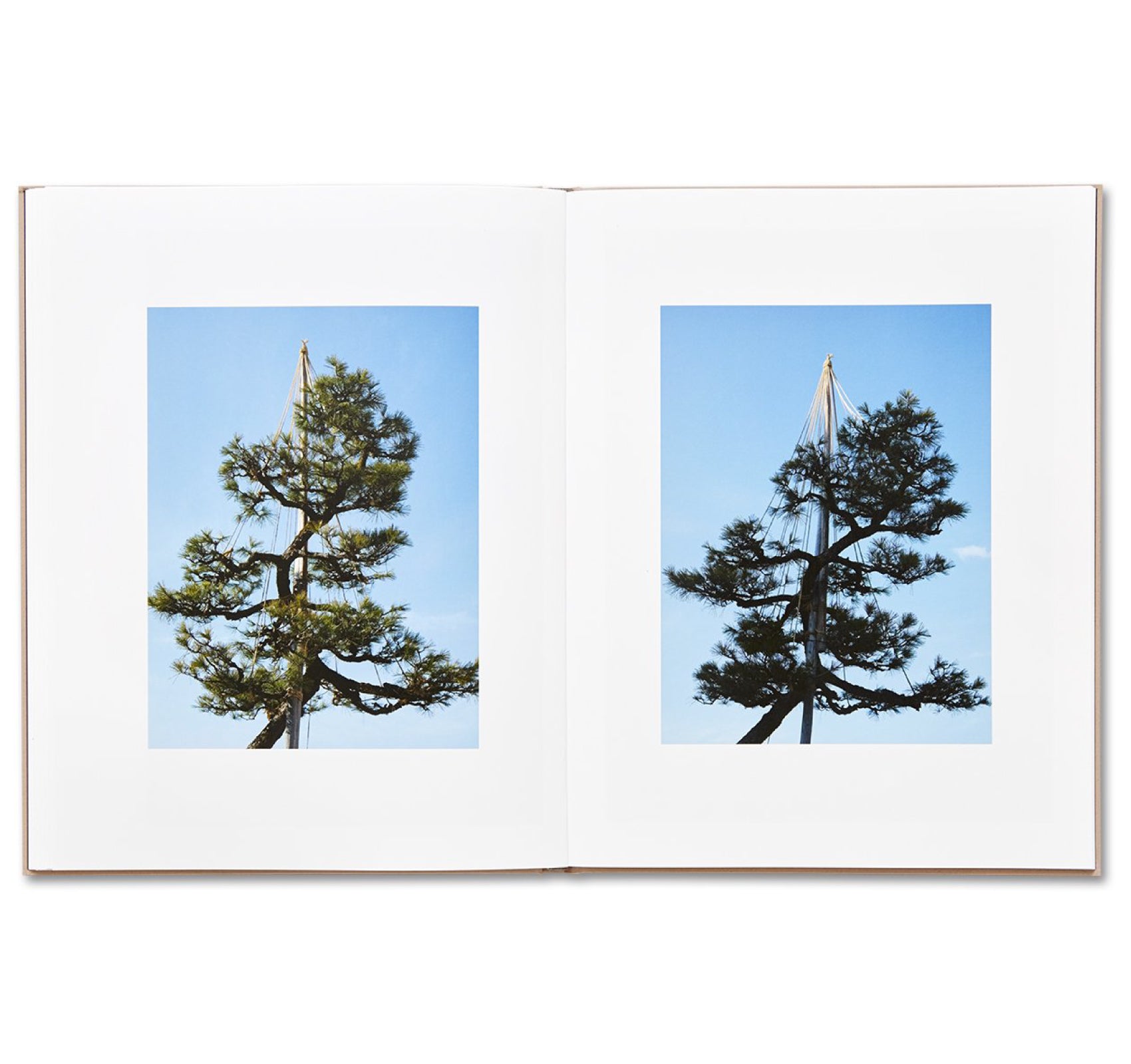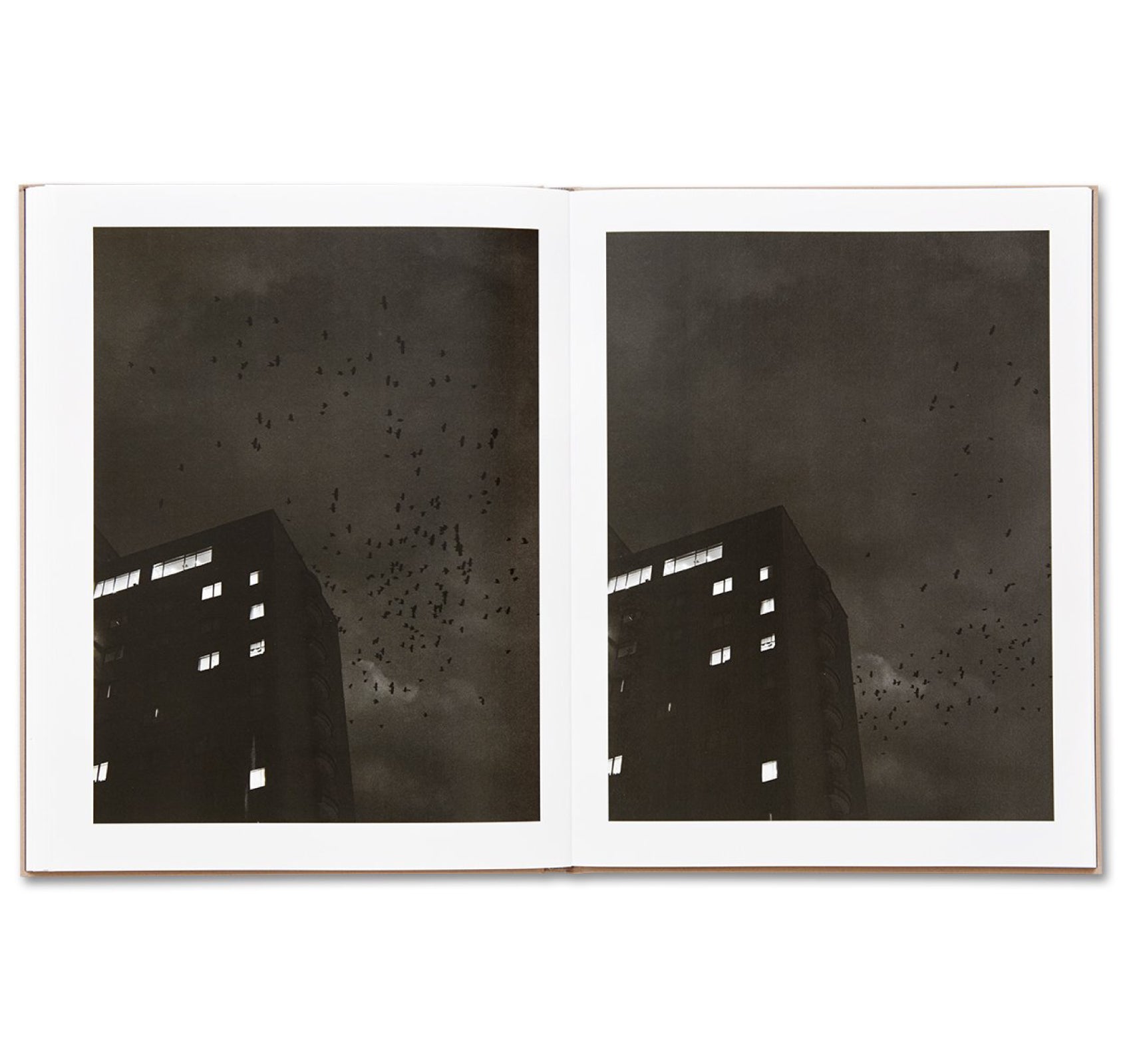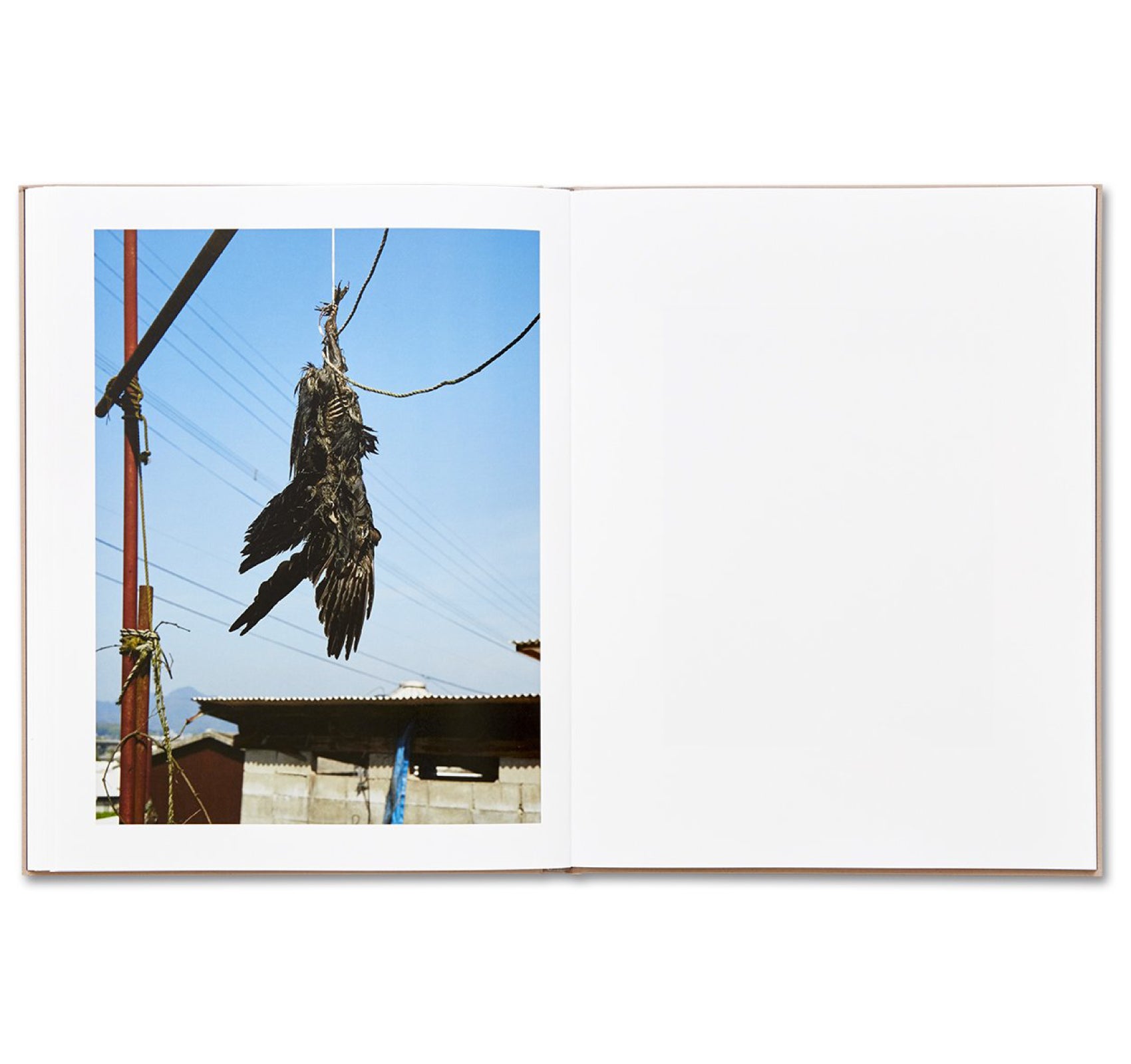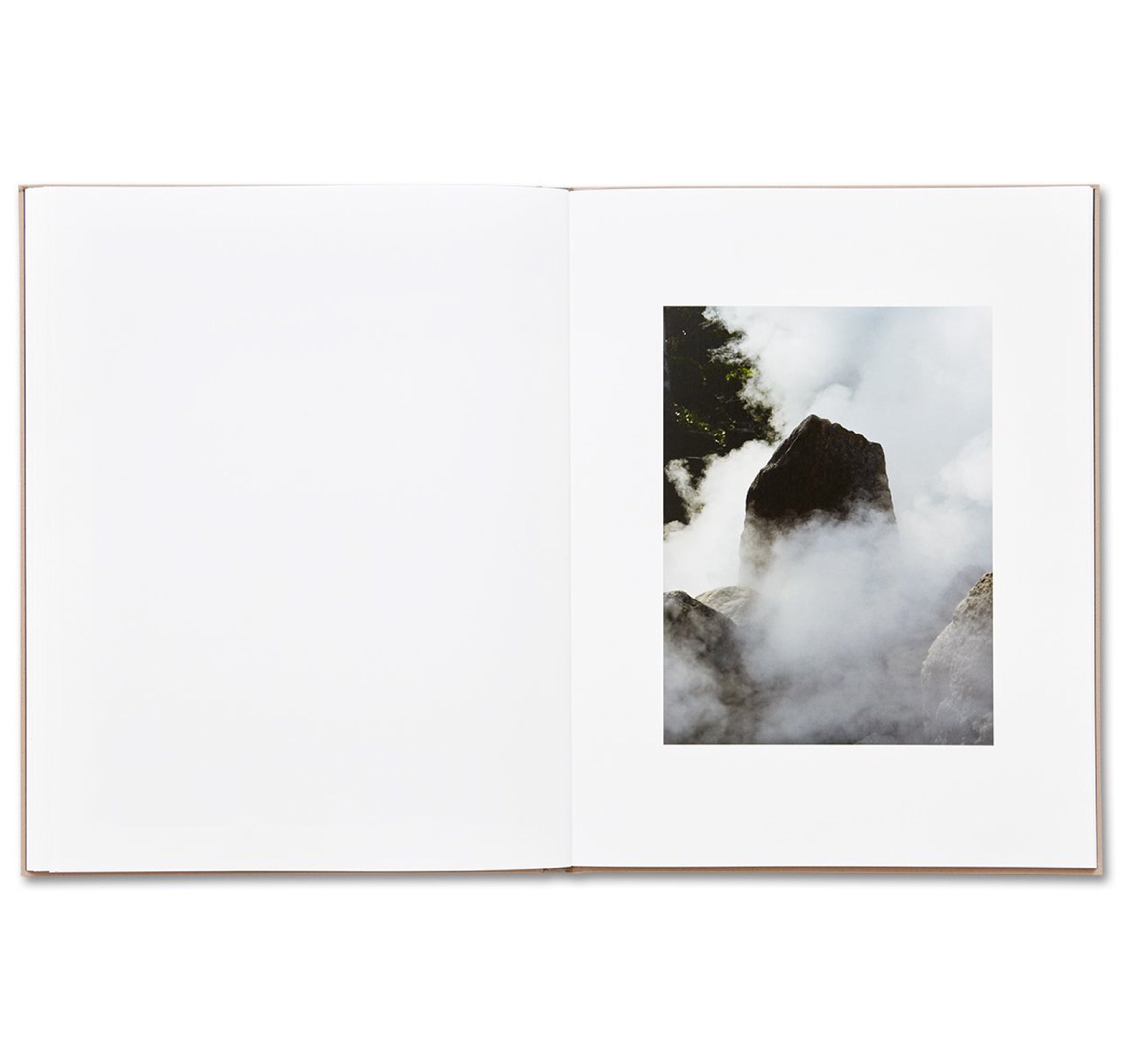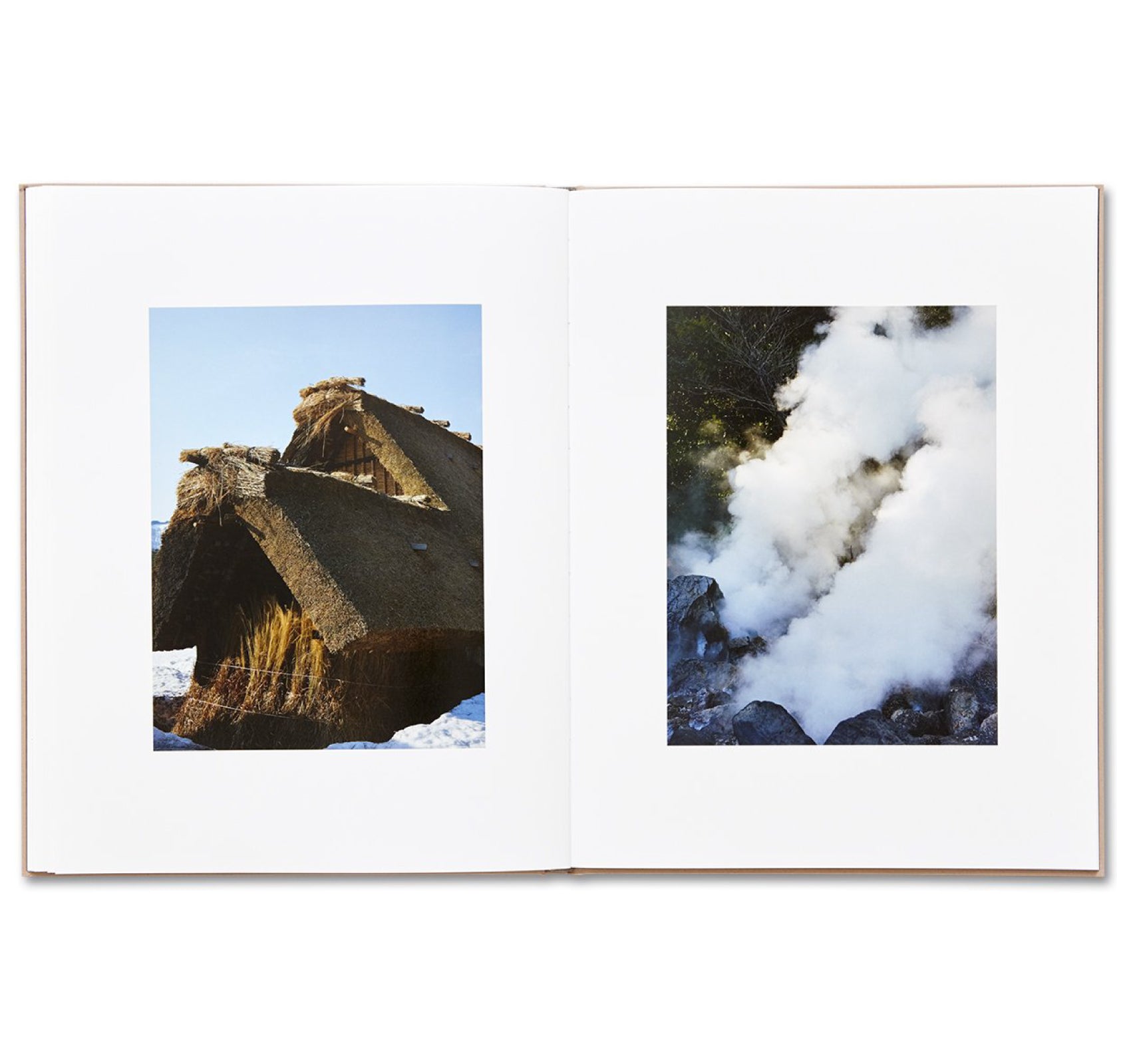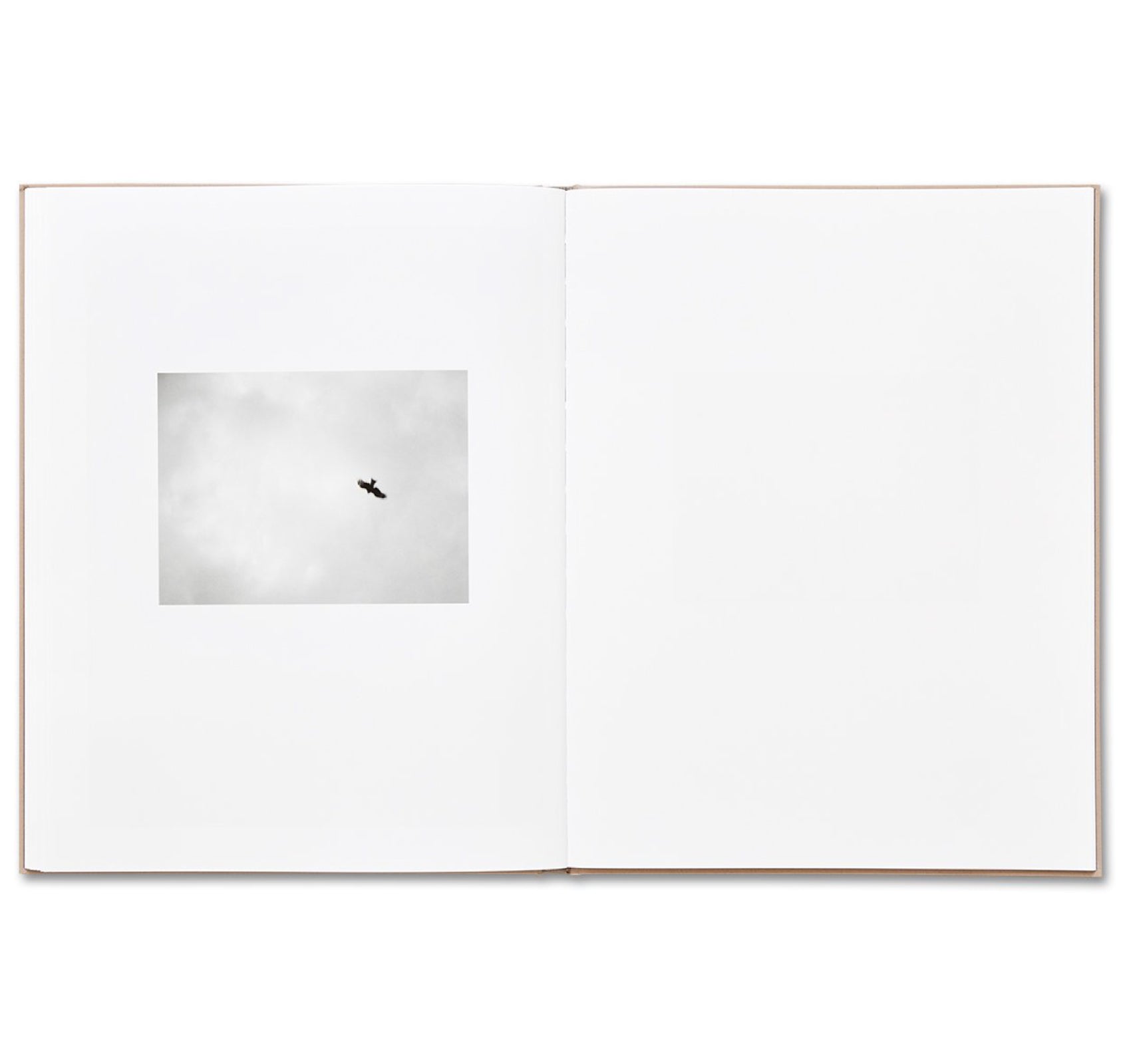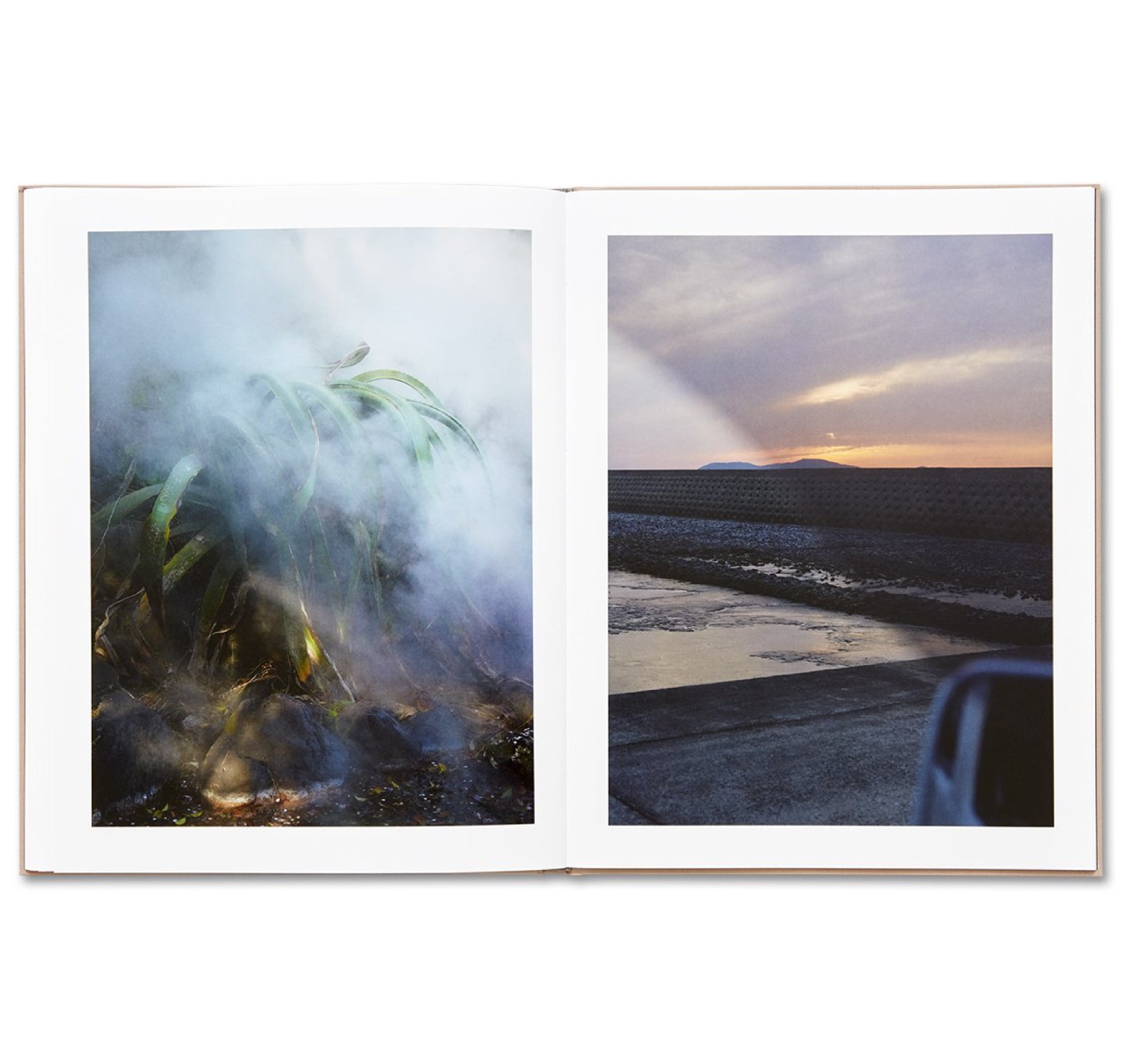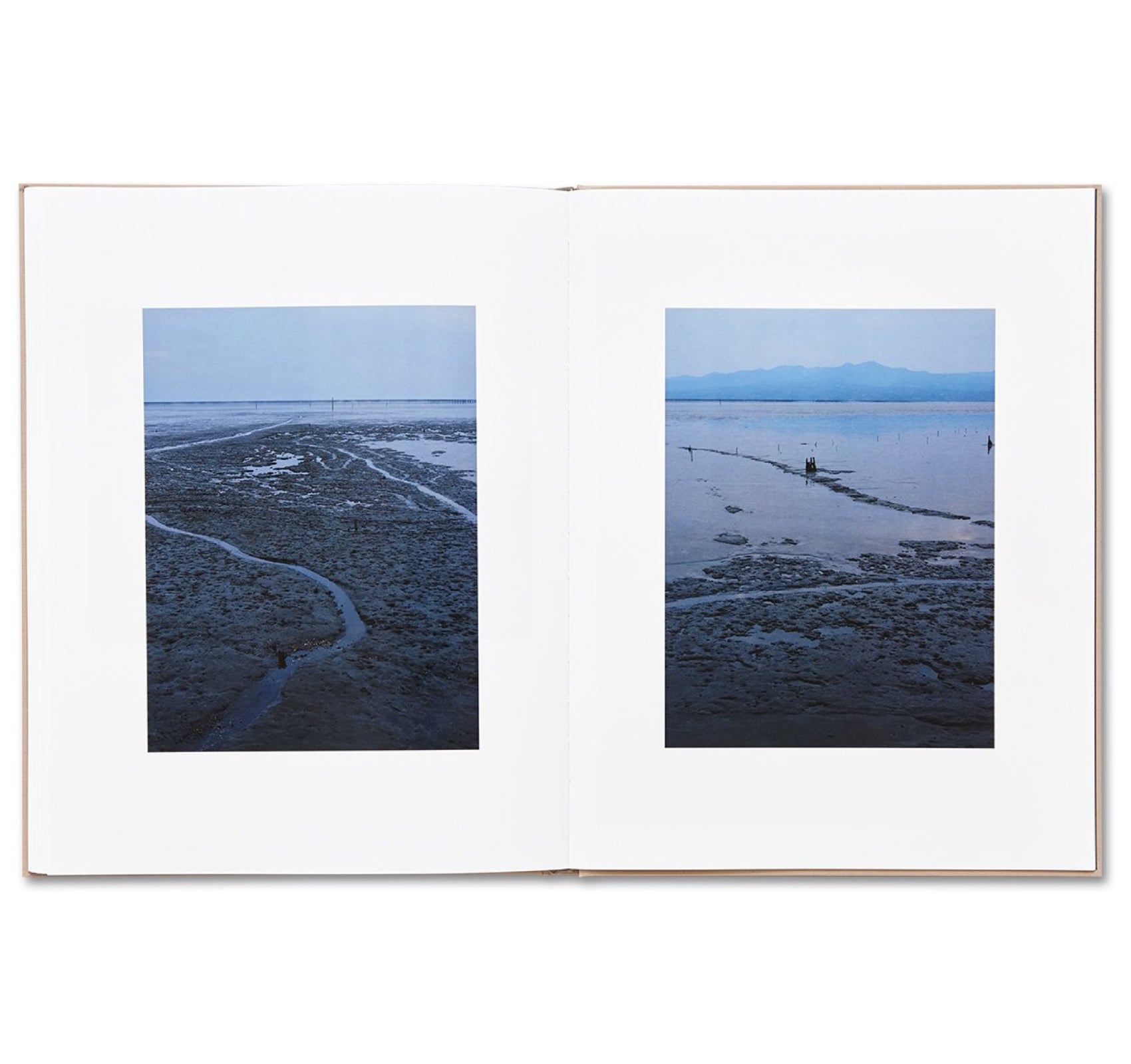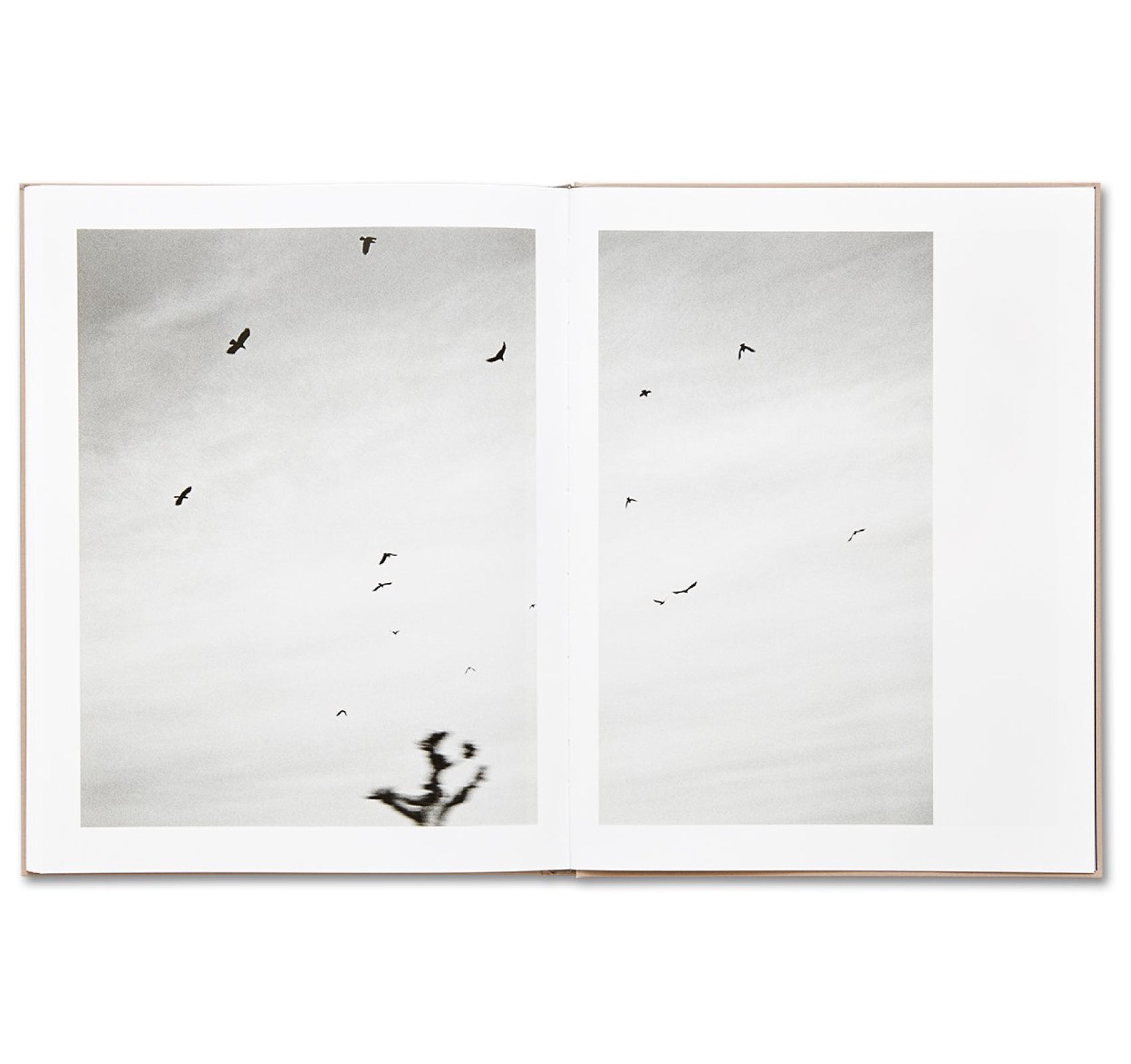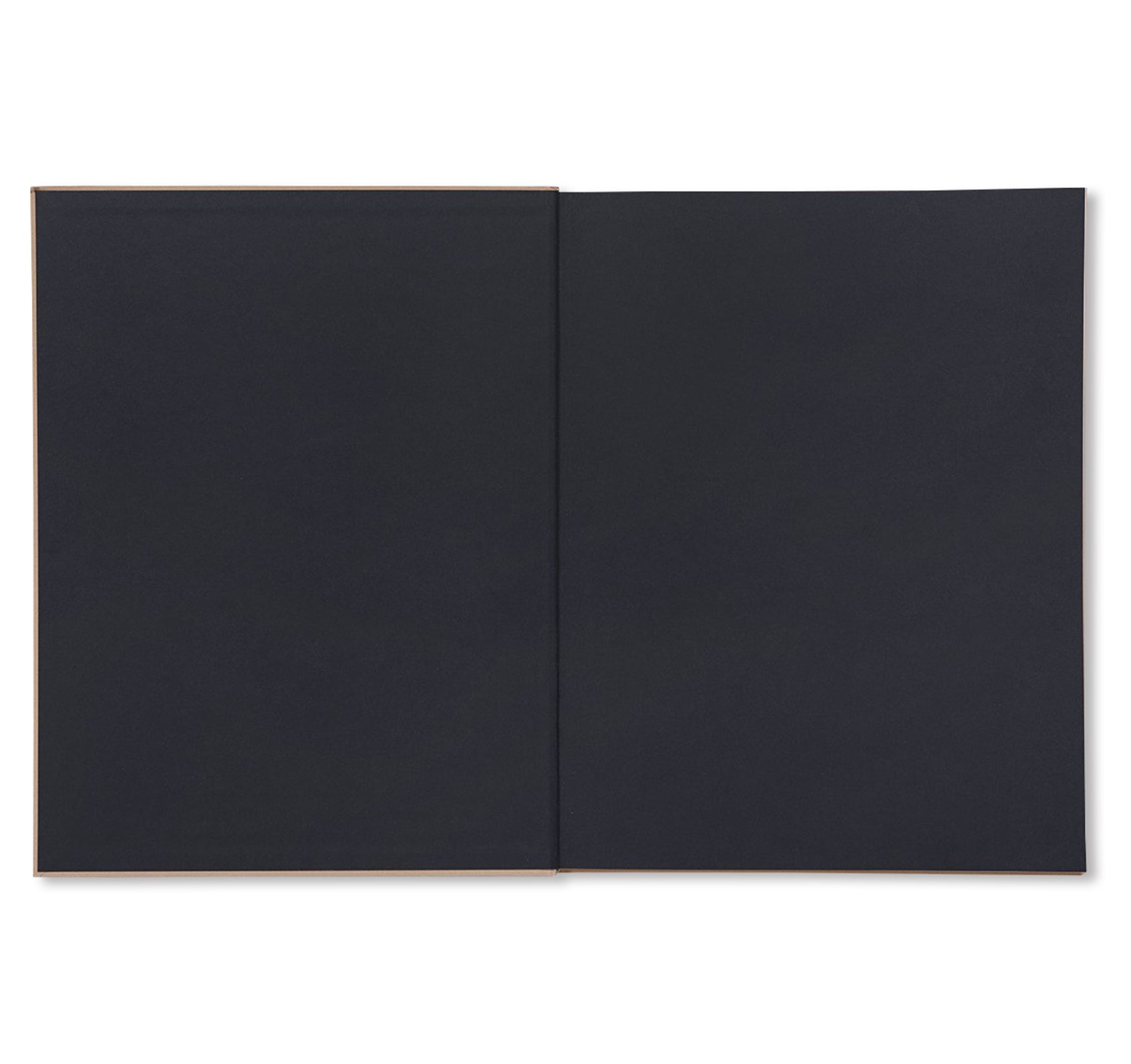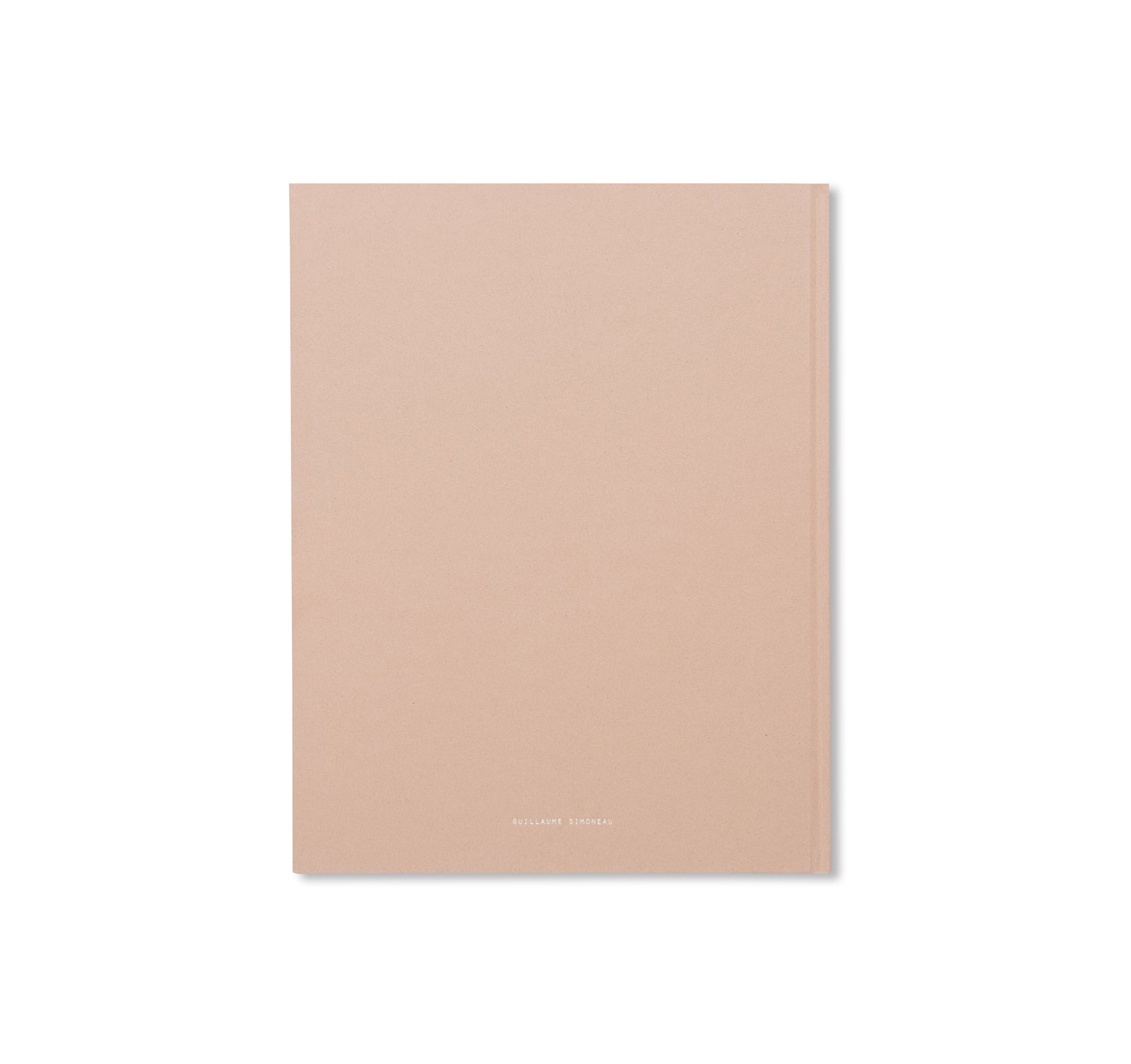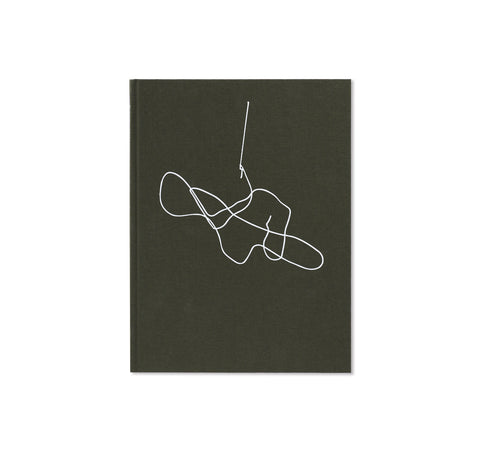MURDER by Guillaume Simoneau
カナダ人フォトグラファー、ギヨーム・シモノー(Guillaume Simoneau)の作品集。本書の起源は1982年の春まで遡る。当時日本では、写真家の深瀬昌久が戦後日本の写真史に残る傑作『鴉 / RAVENS』を発表した。その一方で作者自身は、家族の住まいの近くにあった木が倒れて孤児になった鴉の雛を保護し、一家で育てていた。当時作者の母親が残した写真には、幼い頃の思い出が他にはない叙情的なイメージで落とし込まれている。それから40年近くが過ぎ、その瞬間は作者の新しい物語の中に焼き付けられた。2016年から2017年にかけて制作された本作は、『鴉 / RAVENS』が誕生した金沢が舞台となっている。所々に顔を出す茅葺屋根の民家、松の森、海岸といった金沢らしいとも言える風景には、写真の中の出来事からは遠く離れた伝統、いつまでも変わらないものに対する深い思いが見てとれる。建築的な表現を見出した作者の新しい写真には、80年代の空気が色濃く出た深瀬昌久の『鴉 / RAVENS』による解釈が生き生きと息づいている。肩に鴉を乗せたまだ幼い作者が写るモノクロ写真の隣には、絡まったロープに吊るされた腐りかけた死体の鴉や、猛禽に捕まり鋭い爪で押さえつけられている鴉など、暴力的なイメージが並列されている。このコントラストに冷笑的な雰囲気は微塵も感じられず、むしろ人の心を強く揺さぶり、カタルシスを感じさせるノスタルジアに対する相反する感情が表れている。いくつかの写真では深瀬昌久の作品が直接言及されているが、作者は深瀬昌久から受け継いだ表現言語を使って、深瀬昌久の表現に挑戦する。全編を通じ、鴉の持つ象徴的な意味を問い続ける。子供時代のイメージでは、鴉は意外にも親密さの象徴になっている。これに飛行中の鴉がぼんやりと写っているイメージを組み合わせることで、作者は不穏な時代の前兆という文化的な意味合いをこの鳥にもう一度与えようとしているかのようである。
The genesis of Guillaume Simoneau’s new book, Murder, is in spring 1982. At around the same time Masahisa Fukase was producing his post-war masterpiece Karasu (Ravens), Simoneau’s family adopted a nest full of baby crows orphaned from a fallen tree. The photographs from this time, taken by Simoneau’s mother, paint an unusual and lyrical vision of childhood. Nearly forty years later, these moments are memorialised in dialogue with Simoneau’s new works, produced in the spring of 2016 and 2017 in Kanazawa, Japan. This setting, the birthplace of Karasu, punctuates the book with a further-reaching interest in tradition and timelessness that looks beyond the scope of these events to the landscape, famous thatched houses, the pine forests and coastline. The crisp, architectural qualities of the new photographs evoke a rendering of Fukase’s original that is, however, distinctly of its time. In Murder, the original black and white image of the photographer as a child, crows perched on his shoulders, is set alongside visions of violence: one crow hanging by rope, tangled and rotting, another pinned down by a large bird of prey. The mood of this contrast is never cynical: instead, it develops an ambivalent approach to nostalgia that is energetic and cathartic. Several of these photographs directly reference Karasu, and it is this language of violence inherited from Fukase that becomes the mode with which Simoneau challenges this inheritance. Throughout the book, the symbolism of the crow is constantly at stake. In the childhood images, the crow becomes an unlikely symbol of intimacy; coupled with blurred glimpses of the bird in flight, Simoneau threatens to restore the bird to its cultural function as an omen of turbulent times.
